#Output Brooklyn
Text
Whumptober Salvage: Episode 3
Well, I'm back. Finally. More life happened in the past week-and-a-half than I had planned for, but here we are!
Today's theme: Restraints
Today's author commentary: The concept of Luigi [redacted due to story spoilers] is something I got from a fic I read a while ago on fanfiction.net whose name I absolutely cannot recall at the moment. But I love fallout fics like this and it's not an impossible consequence of the events of SPM if things had gone in a certain direction.
Warnings: No real warnings here, I'm just excited about this one :D
Index: Episode 1; Episode 2
~~~~~~
It’s good hardware. Great hardware, even.
Tensile strength? Check. Double check that, he corrects himself with a grimace, pulling at the twin sets of heavy shackles around his wrists and ankles.
The yield strength was high. High enough, he couldn’t even begin to calculate an exact number. (Liar, the voice in the back of his mind corrects. You can’t concentrate on calculating an exact number.)
To reach the malleability threshold must have required something beyond simple fire. Lava would have been his first guess, but he doubts these restraints are a product of the Darklands. Use of an electric current was a feasible concept - maybe - but it would have necessitated one hell of a resistor to produce the heat required to bend this kind of metal into a proper restraint.
This leaves a few less palatable options.
The temperature inside a star would certainly get the job done. But he only knew of one person with even the slightest hope of developing a technology to harness the cosmos in that manner, and Luigi has to believe, for his own sanity, that E. Gadd has no involvement with his current predicament.
Unfortunately, this leaves magic as the only other viable option.
Luigi grits his teeth, absently running his fingers over the cool, smooth surface of the heavy cuffs. No. They couldn’t. They wouldn’t. It had been outlawed years ago, far before he had landed in this strange world. They would have had to strike some kind of deal with the enemy, or spend more coins than he could imagine to acquire this level of restraint. And why did they even have these on hand in the first place? How could they have possibly known -
After everything. Everything he’s done for them.
He’s been kidnapped. Tied up and thrown in a dungeon. Has been bruised, burned, cut, and broken in seventeen different ways. Has been manacled, trussed, bound, caged, buried, boxed, restrained, surrounded.
And it was supposed to be that way, alright? It was all part of being a hero.
Luigi plays at the long chains falling from his wrists, a line of solid, squarish links extending back to a thick, leather belt secured around his waist.
He hadn’t wanted to be a hero. Swooping in and saving the day, getting the pretty girl, marching in parades and receive=ing accolades from a grateful population. It wasn't...him.
No, he had never wanted to be that person.
But was it so wrong to want to be seen as an equal?
He sags against a cold, stone wall with a hoarse sigh, rubbing at the bridge of his nose, his fingers digging into the soft collagen of his eyeballs. The movement produces a percussive, dullen ripple as the chains linked to his wrists fall over another, doubled lines of looping metal drooping from his midline to his shackled ankles.
I guess it was. He huffs out a hollow laugh at the thought, picking up one of the chains, inspecting the dense links at eye level.
There was an art to welding. Not the same kind of art those kids over at LaGuardia used to pump out at all hours of the night - weird, insectile sculptures whose disjointed end result of legs and limbs and tentacles mashed onto a misshapen thorax resembled a creature out of Dr. Frankenstein’s laboratory.
No, the art in welding came from the marriage of form and purpose, in the perfectly rounded curve of a plate face, in the smooth aerodynamics that resulted from a nearly seamless, but unbreakable fusion of two disparate materials.
The art was in the flight of a machine never meant to fly, in a silohoutte never meant to be replicated in such vicious form.
Luigi pulls at either end of the metal links. Whoever had forged these chains knew what they were doing.
The only thing he can’t quite wrap his head around is the belt. Not that a belt in itself was a confusing item. He’s worn belts almost his entire life, a constant war with drooping pants and scolding family. You should eat more. You’re too skinny. You look like a girl. You’re going to get your ass kicked one of these days if you’re not careful.
Sure, he knows about belts. He’s a plumber, right?
And there's nothing too odd about the one he wears now, save the enormous engraved buckle sitting right below his belly button, the nexus point of the chained tentacles unfurling to the four endpoints of his wrists and ankles.
He was told it was meant to bind his magic.
A dark chuckle vibrates beneath his sternum.
Magic. A ludicrous thought.
Magic isn't real.
And I couldn’t pull a rabbit out of a hat if I tried.
A heavy door squeals open on the opposite side of the dark chamber. A short, robed figure enters first, followed by two familiar beings of similar height. The guards, who he’s nicknamed “Click and Clack,” (a memory of slow, sultry summer days, his too-long legs dangling off the rusted metal of a fire escape, the crackling static of his little radio fighting against the tortured grumbles of the nearby D train) take their usual places on either side of him, their domed heads only reaching as far as his mid-tricep, their pointed, well-honed spears towering tall above Luigi’s own head.
The third visitor is one he’s not seen before, his long, embroidered robes pooling in eddies of velvet at his feet. He spares a single, disgusted look in Luigi’s direction as he pushes a pair of little, round glasses up his nose.
“It’s time,” he says.
Click and Clack take him roughly by either arm, their odd little entourage an awkward three-legged race in slow motion, the trio limping behind the robed being, who has turned back towards the open door, his steps solemn, measured.
This is it, Luigi thinks, his gut churning.
There will be an audience, for certain. Beings who will be all but salivating to witness him dragged into the light, shackled and accused.
He used to think he knew where the line was, that unshakable boundary between enemy and ally.
He realizes now that perhaps that line never existed at all, or if it did, it only served to separate him from everyone else.
The light of the interior chamber is harsh, too bright to be natural. Luigi squints his eyes, letting his head drop towards the floor as he’s led through a deluge of camera shutter clicks that sound like the wings of a thousand frenetic cicadas, past the murmuring tributaries of whispered accusation and barely-shrouded invective.
He can feel their eyes on him, all of them. As Luigi approaches a bare, wooden seat, he senses his gaze, a thousand unspoken words in an unmet, silent question. Luigi tenses his shoulders, making for the stripped down chair that is both the source of his salvation and damnation. There’s no threat, no promise in this universe or any other which could convince him to answer back, to meet that too-familiar pair of azure eyes.
You let this happen.
The next moments pass in a blur. He sits, then stands again at the prompting of Clack (or is it Click?), who remains steadfast at his flank. Finally, he sits one last time as a low, sonorous voice to his left produces a slurry river of speech.
“...your duty today…”
“...beyond a reasonable doubt…”
“...the defendant must be found…”
Reality crystallizes around him in one horrifying, frozen moment.
This is really happening.
“Ms. Shiitake, what is today’s case?” the severe-looking Toad judge asks.
A stout, female Toad in a drab olive uniform steps forward, clipboard in hand. For a brief moment, her image is overlaid by another, beige skin darkening into a periwinkle shadow crowned in a bun-topped fuschia.
Luigi shakes his head, trying to bring his focus back to the room.
“Your Honor,” she begins in a bored monotone, “today’s case is The Mushroom Kingdom versus Luigi Marionetti.”
“And what are the charges?”
Nothing. I didn’t do anything!
“High treason and crimes against the state as they relate to the events of the appearance of the Void, the Chaos Heart, and Mr. Marionetti’s actions taken against representatives of the Mushroom Kingdom, which include, but are not limited to, attempted murder of our head of state.”
A wave of discontented grumbling washes over the packed courtroom, a young Toad in the back climbing onto his chair, pointing at Luigi with a fiery gesture.
“Traitor!” he yells before being pulled back into his seat by a small gang of nearby onlookers.
“Order!” The judge raps his gavel three times in sharp succession.
Luigi swallows over a swollen lump in his throat. Please. I didn’t do it. It wasn’t me. I didn’t want to hurt anybody.
“Is the prosecution ready?” the judge asks.
“Yes, your Honor,” a sharp-suited Toad in red replies as she stands.
Are you so sure of that, the other gravelly voice in his head retorts, an inverted mirror of his own.
The judge turns to the other side of the room. “And is the defense ready?”
Another Toad in a black suit and purple tie stands, fixing Luigi with an inscrutable look before answering, “Yes, your Honor.”
I don’t…I can’t…I don’t know what happened.
“Then the prosecution may proceed.”
Yes, the dark voice chuckles. Yes, you do.
#hello there#writing#the eternal struggle#luigi#is there a car talk reference in this story?#yes#because i feel like that would have been in character for brooklyn luigi#also yes laguardia high school is a real place although i can't comment on the art students' output#also i have thoughts about luigi growing up in 80s/90s brooklyn and how he would have been perceived and how that shaped his attitudes#i have a lot of thoughts about everything#we're back!#hopefully more premanently
12 notes
·
View notes
Text
why scan?
scanning is something i've done for probably about 12 years now (i'm ancient, for this site), with varying degrees of regularity, intensity, etc. it has ratcheted up since the dawn of 2023, though, which begs the question: why? why put so much time into what could not-wrongly be considered a passive activity, hunched over a piece of clunky machinery with the express purpose of preserving others' creations? the answers are several, and fascinating (not really).
i am a [sober] drug addict. anything i pursue, consume, create--more often than not--ends up taking on addictive qualities. i'll eat the same specific food item for a month, then never want to see, let alone taste it, again. i'll listen to one song on repeat for days until i'd rather hear nails on a chalkboard than have it shuffle on and assault my ears. one of the reasons that my scanning has increased in volume recently is that i acquired library cards to the 3 nyc library systems: nypl, brooklyn, and queens. as soon as i was able to, i pillaged + plundered those fine centers of learning, leaving any given library with as many hefty scan-worthy books as i could [barely] carry. here, finally, was a *free* way of obtaining more + more + more visual media to consume.
2023 saw me get my first legal, full-time job. as such, my adjusting to that hellish reality resulted in a steep decline in my own personal creative output. collaging, writing, and rapping all fell to the wayside as i slowly acclimated to a life of work that almost everyone else my age has known for over a decade is generally unbearable + detrimental to the maintenance of outside pursuits. in times of famine within my own artistic harvest, scanning, archiving, and sharing others' work is a means of feeling as though i am still contributing to the global oeuvre.
there’s an element of losing my mental self in a series of physical motions that becomes almost automatic after some time. “zoning out” is not something endemic to my daily life; if anything, i’m almost always too zoned in. relief is necessary. especially considering the shitshow this past year has been in terms of my personal life.
i am a product of capitalism’s cultivating a craving for constant consumption.
it seems that visual content is only going to continue to get more + more uninspired. has everything been done? did social media ruin it all? in any case, i feel a need to document the past. to a degree, it’s my version of doomsday prepping. (god forbid books go extinct altogether.)
i have always gravitated towards solitary activities. this topic could be a thesis in its own right.
i thrive on external validation. this reliance is something i’ve improved upon over the past several years, but it hasn’t been altogether extinguished. even though the materials i scan are not of my own creation, i nevertheless feel a vague pride in showcasing them. occasional appreciation thereof satisfies this fixation on others’ attention, albeit in a diluted form.
i am fortunate to live in a city bursting to the gills with cultural institutions. i am also lucky enough to have some disposable income that can be directed toward fulfilling my ravenous desire for visual media.
((i keep getting messages about the specifics of my scanner + "process":
i have a cheap ass hp envy 6055e and i just use the software it comes with.
there's nothing special or fancy happening here, and i could definitely invest in a better and/or a large format scanner, etc. but i really just don't care enough and it's not like i'm getting paid for this lmao))
1K notes
·
View notes
Text
Music is an Essential Verb: Derek Taylor 2023

Music remains, along with family, friends, and a select few venial vices, my primary daily defense against the mental erosions of spiritual malaise and existential dread. Being a humanist also means being a realist, and little looks to be different on that score in the year ahead as we continue to careen toward a bleak and self-defeating dénouement. The veil of uncertainty around what ultimately feels like inevitability redoubles the need to remain thankful for and supportive of those who devote themselves to art. Summary capsules below describe some of the sounds that kept me going in 2023.
Peter Brötzmann, Wayne Shorter, Kidd Jordan, & Charles Gayle

“The trauma of my generation was what our fathers had done to the rest of the world, and so we said, ‘never again,’ and that was the whole impetus through all my life, and it still is.” ~ Brötzmann (2018)
Musician attrition and demise are dispiriting aspects of every annum, but the departure of four disparate octogenarian reedists exacted an especially steep emotional and cultural toll this year. Shorter and Jordan passed away in March, each of them leaving a rich legacy as indefatigable improviser and altruistic educator that continue influence and inspire. Brötzmann exited in June after the return of a protracted respiratory illness. Few if any can match the magnitude of his mileage and six-decade itinerary as an irrepressible, obstinately adventurous world traveler. Gayle ascended in September, an ardent, uncompromising eremite to the end. All four men left behind discographies and concert/interview footage that will leave the faithful and curious listening and marveling in perpetuity, but their collective absence still aches.
Kirk Knuffke & Joe McPhee Quartet + 1 – Keep the Dream Up (Fundacja Sluchaj)
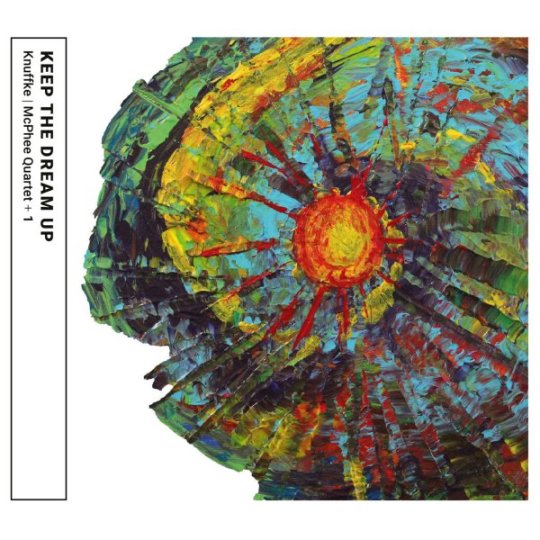
One of the manifold joys of following the output of Kirk Knuffke is anticipating who he’ll collaborate with next. The cornetist’s ears and imagination are as huge as his heart, a trait he has in common with the equally equanimous Joe McPhee. They’ve known each other for years but Keep the Dream Up is their first released collaboration and it’s an affirming alloy of their complementary creative temperaments. Longtime McPhee comrades Michael Bisio and Jay Rosen complete the quartet with bass clarinetist Christof Knoche comprising the additive on a Brooklyn studio session that captures collective creative lightning in a digital bottle. My album of the year for these reasons and more, although hopefully Joe will bring his brass to a follow-up conclave soon.
Don Byas – Classic Sessions 1944-1946 (Mosaic)
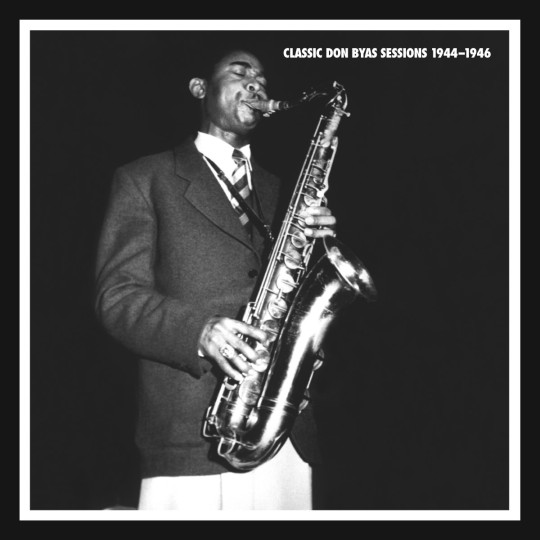
Saxophonist Don Byas recorded prolifically during the 1940s. His porous sound and popular style bridged the schools of swing and bop through prowess and panache aligned with the most esteemed of post-WII tone scientists. That sustained industriousness hasn’t reflected in reliable access to his works, primarily because they’re spread across a plethora of independent labels and competing copyrights. Leave it to Mosaic Records to rectify the longstanding reissue lacuna. This long gestating collection corrals and sequences the bulk of them across ten discs, scrubbing their sound, and adding an expansive cache of rarified verité concert recordings made in a Swedish jazz fan’s residence. Indulging in one’s Byas bias has never been easier or as edifying.
Fred Anderson – The Milwaukee Tapes Vol. 2 (Corbett vs Dempsey)
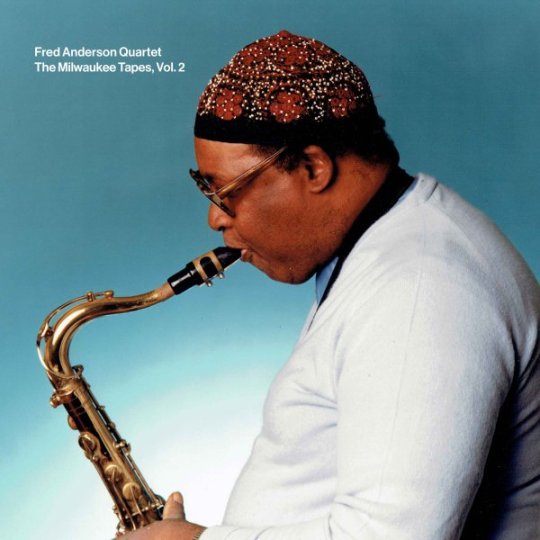
Patience and long-game aptitude are among music producer/archivist/advocate John Corbett’s virtues. This unexpected, but abundantly welcome sequel to an archival Anderson collection on Corbett’s long defunct Unheard Music Series took 23 years to secure commercial circulation and offers an additional hour-plus from the same gig in improved sound. Fellow AACMers Billy Brimfield and Hamid (nee Hank) Drake join bassist Larry Hayrod in bringing vibrant, detailed life to the Lone Prophet of the Prairie’s (as Anderson was affectionately known) serpentine, cerulean melodies. Corbett’s current label released a plenitude of music in 2023 (see also below) but the uncommon opportunity to hear more Anderson of any vintage makes this release worthy of independent mention.
Jason Adasiewicz
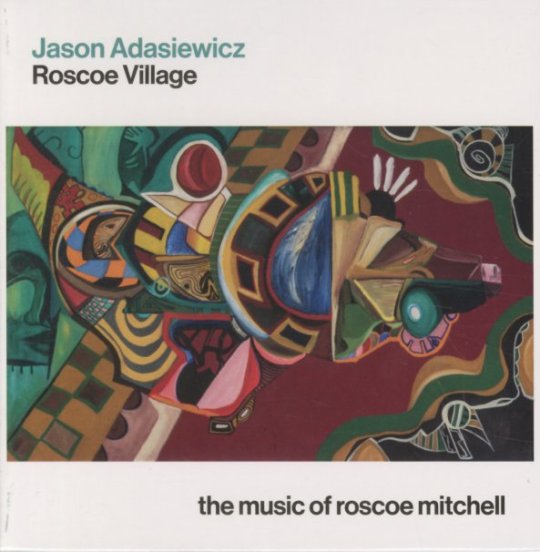
Corbett vs. Dempsey also had a welcome role in Jason Adasiewicz’s return to record with two different projects. On vinyl, Roy’s World documents a 2017 Chicago studio session by the vibraphonist’s quintet originally intended as the soundtrack to a film based on neo-noir novelist Barry Gifford’s short stories. Chicago stalwarts Josh Berman, Joshua Abrams, Hamid Drake, join saxophonist Jonathan Doyle in the ensemble for a program that sounds at once fresh and nostalgic while always vital. On CD, Roscoe’s Village dispenses with band for a solo selective foray through the songbook of Roscoe Mitchell including evocative renderings of “Congliptious” and “A Jackson in Your House” that retain the composer’s essence while striking out in bold new directions.
Natural Information Society
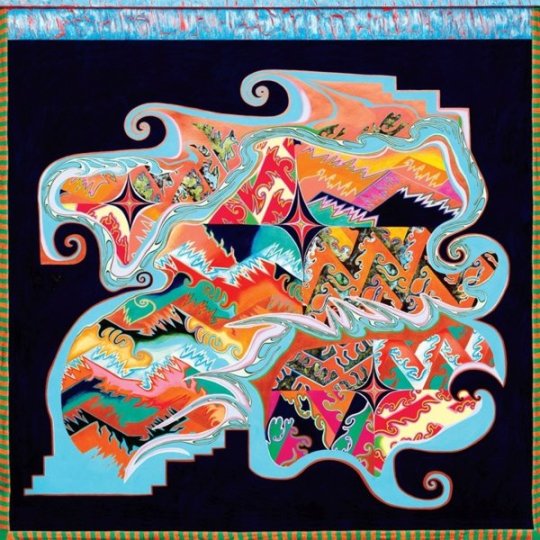
Grounded as it is in core voices of guembri, frame drum and harmonium, codification of Josh Abrams’ NIS as a jazz ensemble immediately feels reductively incomplete. All participating instruments can be active architects in the undulating, melody-laced drones that frequently form the basis of the band’s gradual, granulated improvisations. Performances are more akin to collective expeditions where a galvanizing gestalt effect is afoot; one where earned communal peaks preserve the individual power and agency of the interlocking parts. Since Time is Gravity augments this already catalytic template by incorporating a larger contingent of Chicago colleagues including tenorist Ari Brown to the equation.
Abdul Wadud
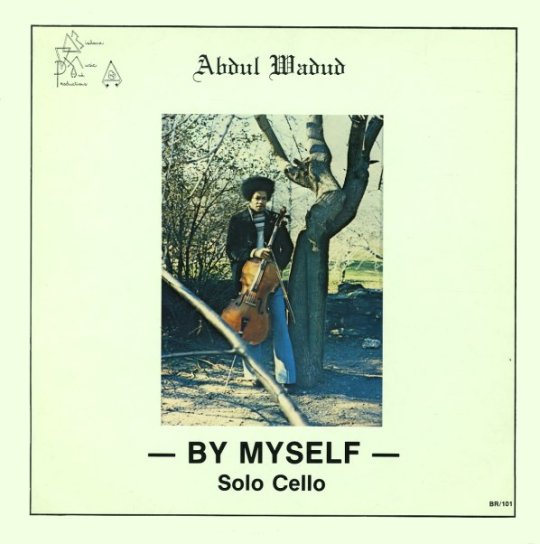
A jazz-based improviser on the cello who didn’t double on other stringed instruments, Wadud was also a consummate collaborator and sideman. Magnanimity in lending his substantial talents to the projects of others resulted in a paucity of albums under his own name. By Myself from 1977 on the Bisharra label is a revelatory anomaly on that self-effacing resume. Wadud approaches the instrument as a multifaceted sound factory, plucking, strumming, and bowing, often simultaneously, to create solo tone poems steeped in personal poignancy. Gotta Groove’s vinyl reissue is a beautiful facsimile of the original album object in faithfully reconstructed fidelity.
Marion Brown
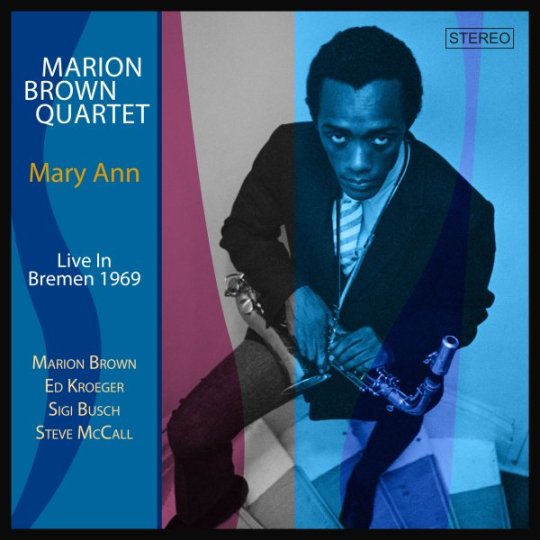
Georgia-born altoist Marion Brown had a lengthy, storied career but the body of recorded work that he left behind can present difficulties in terms of ingress to its totality. Scattered across labels, years, and circumstances, much of it is either out of print or commercially unreleased. That collective relative obscurity makes a trio of releases, two on the German Moosicus label, and a third Record Store Day viny reissue of Brown’s 1970 studio duets with Wadada Leo Smith under the shared sobriquet Creative Improvisation Ensemble even more valuable. Of the former two, Mary Ann presents concert material by Brown’s quartet from a 1969 Bremen club gig in soundboard fidelity. Gesprächsfetzen & In Sommerhausen combines two more German concert snapshots, quintet, and sextet, from 1968 & 1969 with Gunter Hampel originally released on the Calig imprint. Steve McCall is a boon on drums in all three contexts.
Art Pepper – Complete Maiden Voyage Recordings (Omnivore)
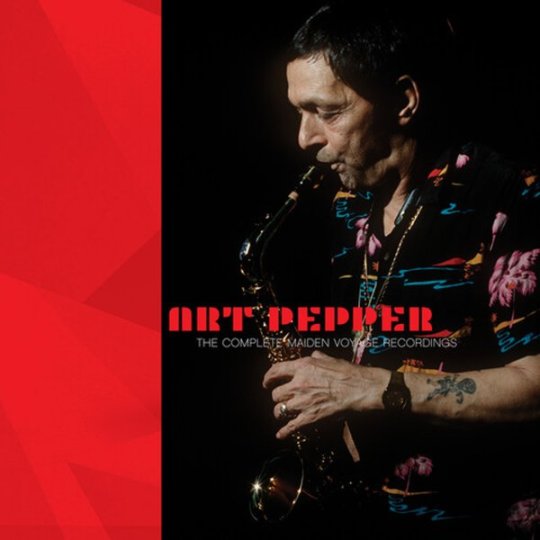
Art Pepper was an inveterate rake for most of his life, magnifying destructive interpersonal tendencies with drugs and frustratingly frequent acts of self-sabotage. That star-crossed propensity makes the fact that he left so much magnificent music even more miraculous. This lavish box is a fascinating compendium of the constantly competing artistic contradictions at his center, collecting a quartet gig across three nights and seven club sets in Pepper’s native Los Angeles, ten months prior to his premature passing at 56. Over half of the music is previously unreleased and the rhythm section, led by the impeccable and implacable pianistics of George Cables, gives Pepper a cumulative confidence boost that keeps him on the rails. None of it has ever sounded better.
Pan Afrikan People’s Arkestra

Los Angeles of the late-1970s was an unforgiving environment for the economic necessities of orchestral jazz. The Pan Afrikan People’s Arkestra, under the nominal leadership of pianist/composer/community organizer Horace Tapscott, was a tenaciously subversive force in the face of that ruinous rule. Adopting the Immanuel United Church of Christ as an informal base of operations, the large ensemble resourcefully engaged in an ambitious series of concerts in 1979. The Nimbus label, long a Tapscott exponent and repository, released the first three entries this year in an archival subscription series collecting the voluminous results. Titles are also available individually and present the pivotal band at a performative peak with star soloists Sabir Mateen, Billy Harris, Jesse Sharps, and Robert Miranda shining just as bright as their fearless foreman.
Alan Skidmore – A Supreme Love
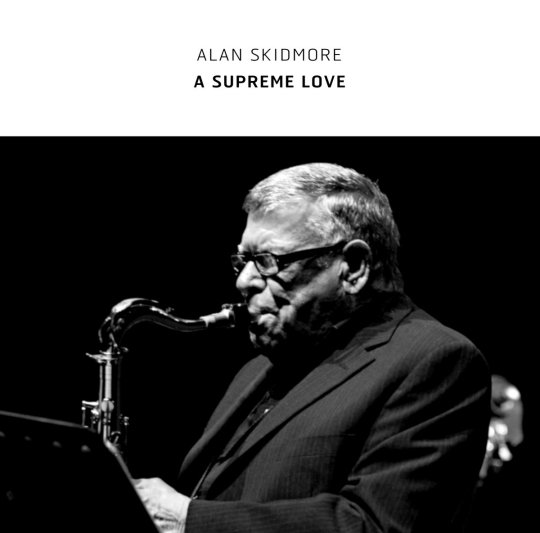
Unexpectedly issued on Mark Wastell’s Confront label, an imprint better known for its fealty to free improvisation, this six-disc archival tribute to Alan Skidmore’s 70+ year career in music launches with the saxophonist’s 1961 radio debut and lands some seven-hours later with his intimate 2019 rendering of John Coltrane’s “Psalm.” The aural expanse between is brimming with bright moments and luminary collaborators the likes of which include Tony Oxley, Kenny Wheeler, Wayne Shorter, Dave Holland, Mike Osborne, Elvin Jones, and another dozen name drops from the top tier of improvised music. It’s a wild, illuminating ride and a sterling example of a musical memorial done right.
The Jazz Doctors – Intensive Care/Prescriptions Filled: The Billy Bang Quartet Sessions 1983/1984 (Cadillac)

Billy Bang and Frank Lowe shared a bottomless fraternal bond forged through parallel traumas internalized in Vietnam and expressed by the subsequent embrace of the restorative power of improvised music. The pair of sessions (one reissued, one archival) collected on this disc epitomize their deep attachment arguably as well as any of their other numerous collaborations. Outside the cardinal duo, the Jazz Doctors never really had a stable lineup, but the quartets here embody two of their best. Both programs are loosely adherent to freebop conventions with violin and tenor saxophone combining over contrabass and drums for a potent front line. Bang and Lowe are long gone now, their shared absence making the availability of this music even more precious.
Attila Zoller & Jimmy Raney
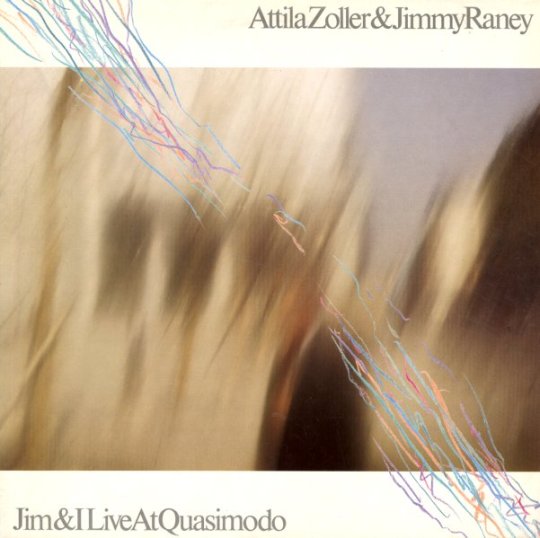
Hungarian guitarist Attila Zoller had selective affinity for other artists on the instrument, so much so that his mid-career period is seeded by fateful encounters with plectrist peers. Most prolific among these partnerships was his prudent pairing with Jimmy Raney. A popular proponent of bop-based jazz, Raney was in a similar exploratory headspace when the two joined forces on a trio of recordings for the German L + R label over a seven-year span. Concert dates from Frankfurt (’80) and Berlin (’86) find the duo spooling out lengthy dialogues that dabble in free improvisation while keeping codified melodies within reach. An earlier New York encounter (’79) explores their rapport in a studio. All three reissues on the Japanese Ultra-Vybe imprint are aces.
Steve Swell’s Fire Into Music
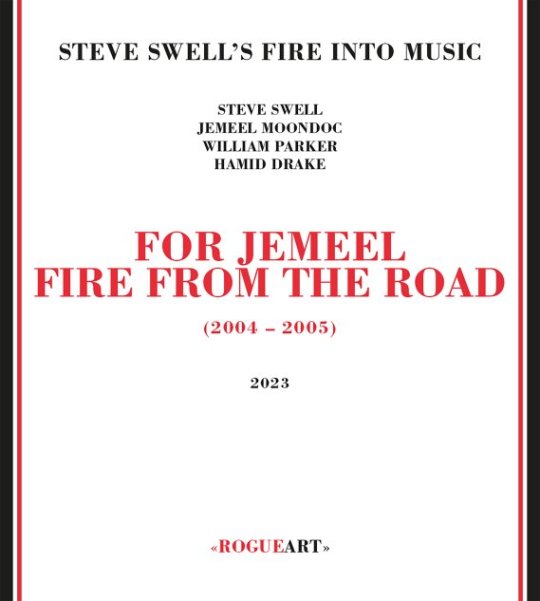
Simultaneously emblematic of NYC free jazz in the early aughts and fiercely dedicated to resisting pitfalls of provincialism by touring generously and rigorously, trombonist Steve Swell’s Fire into Music was one of the finest quartets of its kind. Posthumously dedicated to the late altoist Moondoc, this three CD set collects a trio of small venue concerts by the band from gigs in Texas and Ontario. As with the horns, William Parker and Hamid Drake are ideally suited to the extended, expository freebop safaris that formed the ensemble’s flexible repertoire. Swell’s the leader on paper but sagely embraces musical communalism without fail.
Intakt

Running a physical media imprint in the 21st century is an inherently parlous enterprise, but this steadfast Swiss label continues to evidence how it’s done. This year’s standout catalog entries include Andrew Cyrille’s Music Delivery/Percussion, the octogenarian drummer’s third solo album and first in 45-years; bassist Jöelle Leandré’s solo Zurich Concert; pianist Aruán Ortiz’s Serranías Sketchbook for Piano Trio; Beyond Dragons by the trio of saxophonist Angelika Niescier, cellist Tomeka Reid, and drummer Savannah Harris, and Ohad Talmor’s Back to the Land, a quartet-plus-guests survey that takes its compositional focus an archival workshop date by Ornette Coleman and Lee Konitz.
Ezz-thetics
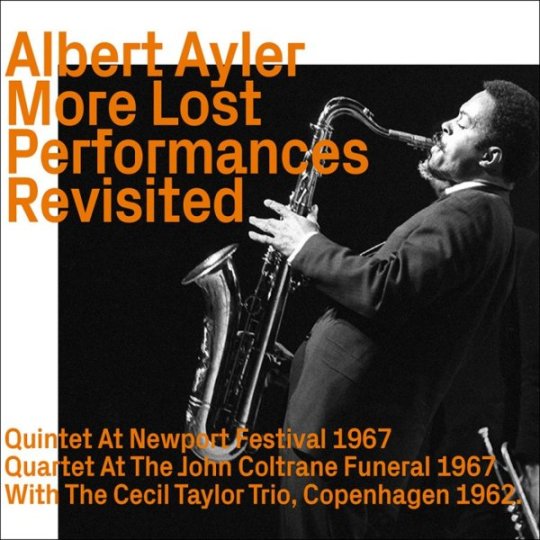
The appearance of the Swiss Ezz-thetics imprint four years ago raised both eyebrows and ire. Lacking access to master tapes, veteran free jazz and new music producer Werner Uehlinger sourced commercially released editions instead, employing ace audio engineer Peter Pfister succeeded by Michael Brandli to rejuvenate and refurbish the recordings, stateside copyright considerations be damned. Reaction was expeditious and polemical, but proof is in the hearing as most of the label’s dozens of releases sound better than their original incarnations. Catalog highlights this year include another round of Albert Ayler airshots including his pivotal meeting with the Cecil Tayor Trio in 1962 on More Lost Performances, Charles Mingus’ At Antibes 1960, and Ornette Coleman’s At the Golden Circle.
Fresh Sound
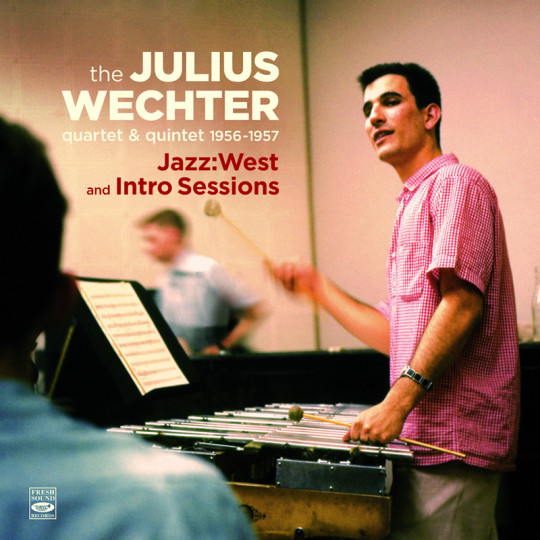
Jordi Pujol is akin to Uehlinger in that he refuses to let his vision and ambitions as a producer be abbreviated by external opinion. In Pujol’s case it’s yielded a bountiful inventory of antiquarian titles that rights holders have shown little to zero interest in restoring to begin with. Cases in point for this year include a definitive collection of obscurando saxophonist Boots Mussulli’s works; concert and studio collections by the Count Basie alumni tandem of Al Grey and Billy Mitchell; hens’ teeth rare leader sessions by Arthur Lyman vibraphonist Julius Wechter; and a two-fer of Julliard-trained Ellingtonian Cass Harrison piano trio albums. Exciting guilty pleasures all around.
Playing for the Man at the Door

As complex as he was controversial, Robert “Mack” McCormick deserves consideration in the esteemed company of other maverick cultural archivists like Alan Lomax, George Mitchell, and Harry Smith. With a preservationist purview mostly comprising Texas and bordering states, McCormick spent much of his adult life obsessively documenting and disentangling the cultural capital of the region through recordings, photography, interviews, essays, and research. Smithsonian Folkways became repository for the massive reservoir after his passing and this box is the first in what will hopefully be multiple dispatches from the same. Unreleased field recordings of Mance Lipscomb and Lightnin’ Hopkins represent the big names, but works by the likes of Hop Wilson, Cedell Davis, Robert Shaw, and a handful of others are just as persuasive. Bongo Joe Coleman’s impassioned presidential pitch closing the set will have listeners pining for a time when third party Executive Branch candidacy didn’t seem so fraught.
Joni Mitchell Archives - Vol. 3, The Asylum Years 1972 to 1975
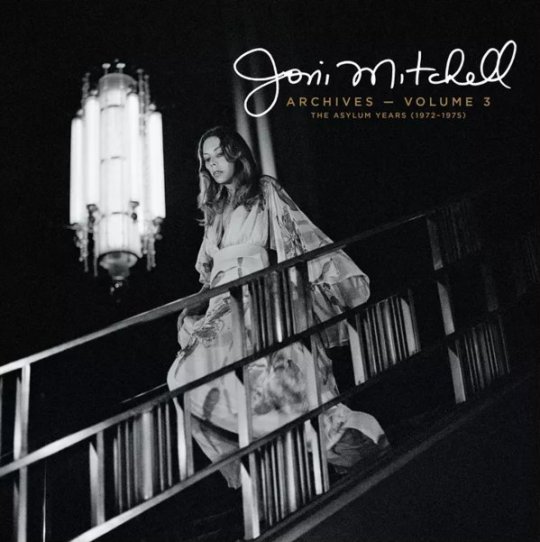
Mitchell’s continuing project corollary to her old friend Neil Young’s analogously exhaustive retrospective enterprise, this third entry in the series finds her 30-something-self further broadening the lens of her art beyond the solo concert music that dominated the first two boxes. There are stirring solitary shows here, too, but it’s the band offerings that prove most revealing, particularly in the company of reedist Tom Scott’s fusion group L.A. Express. James Taylor, Graham Nash, and David Crosby lend contributory hands, and there’s a brief but intriguing collaboration with Young alongside a trove of demos and workshop versions of songs from her first three albums for Asylum.
Martin Davidson

In closing, another memorial. Martin Davidson wasn’t a musician, but European free improvisation as an art and archive would be a fraction of what it is without his copious and enduring work. As steadfast proprietor of the Emanem label he put his resources into musicians whose efforts frequently fell outside the probability of consistent commercial remuneration. Under his aegis, influential improvisers like Steve Lacy, Derek Bailey, Evan Parker, and Paul Rutherford gained robust catalogs alongside other aspiring artists who never garnered even niche cachet. Davidson was a curmudgeon and an anachronism, trusting his ears implicitly, suffering the indignities of inquiries from strangers seeking audience with the hip hop icon who shared the phonetics of his imprint’s name, and advancing the pleasures of physical media well past their purported expiration date. He was also a talented writer, adding invaluable context to his releases through first-person testimony and critique. Martin will be missed.
And as is tradition in this 20th iteration of this year-end exercise, 25 more titles in stochastic order. Thanks to all for reading, and gratitude to Jennifer Kelly for providing the forum and formatting.
Rodrigo Amado’s The Bridge – Beyond the Margins (Trost)
James Brandon Lewis – For Mahalia with Love (Tao Forms)
Henry Threadgill – The Other One (Pi)
Guillermo Gregorio – Two Trios (ESP)
Rob Brown – Oceanic (RogueArt)
Rich Halley Quintet – Fire Within (Pine Eagle)
Milford Graves w/ Arthur Doyle & Hugh Glover – Children of the Forest (Black Editions)
Mike Osborne – Starting Fires: Live at the 100 Club 1970 (British Progressive Jazz)
Jim Hall – Uniquities Vol 1 + 2 (ArtistShare)
Madhuvanti Pal – The Holy Mother (Sublime Frequencies)
V/A – On the Honky Tonk Highway with Augie Meyers & the Texas Re-Cord Company (Bear Family)
Mal Waldron & Terumasa Hino – Reminiscent Suite (Victor/BBE)
Oum Kalsoum – L’Astre D’Orient 1926-1937 (Fremeaux & Associates)
Sonny Rollins w/ the Heikki Sarmanto Trio – Live at Finlandia Hall Helsinki 1972 (Svart)
V/A – Equatoriana: El Universo Paralelo de Polibio Mayorga (Analog Africa)
Evan Parker – NYC 1978 (Relative Pitch)
V/A – If There’s a Hell Below (Numero Group)
John Coltrane – Evenings at the Village Gate (Impulse)
Derek Bailey & Paul Motian – Duo in Concert (Frozen Reeds)
Peter Brötzmann/Fred Van Hove/Han Bennink/Albert Mangelsdorff – Outspan 1 & 2 (FMP/Cien Fuegos)
Hasaan Ibn Ali – Reaching for the Stars: Trios/Duos/Solos (Omnivore)
Mark Dresser – Tines of Change (Pyroclastic)
Steve Millhouse – The Unwinding (Steeplechase)
Myra Melford’s Fire and Water Quintet – Hear the Light Singing (RogueArt)
V/A – Destination Desert: 33 Oriental Rock & Roll Treasures (Bear Family)
#dusted magazine#derek taylor#yearend 2023#Peter Brötzmann#Wayne Shorter#jazz#kidd jordan#charles gayle#kirk knuffle#joe mcphee#don byas#fred anderson#Jason Adasiewicz#natural information society#Abdul Wadud#marion brown#art pepper#Pan Afrikan People’s Arkestra#Alan Skidmore#The jazz doctors#Attila Zoller & Jimmy Raney
15 notes
·
View notes
Text

Cold Cave / Black Marble / Choir Boy @ Warsaw, N.Y.C.; June 14, 2018.
Hello, Warsaw. We meet again. It’s been seven months since I first visited the Polish powerhouse on Driggs Avenue in Greenpoint, one of my all-time favorite places to visit. That was when I attended Hospital Productions 20th Anniversary showcase and it became an unforgettable experience. This time, it’s a shorter affair featuring only three acts: Choir Boy, Black Marble, and headliner Cold Cave. The ritual is the same as last time and every time. Wait on the platform, take the train, hop on the subway line, and arrive in the neighborhood none more blacker where you stand against the venue’s wall. It was all clear out. Thursday’s warm air and blue skies was not symbolic of the night’s wicked-black climax. I called my sis- to tell her how euphoric I was feeling, experiencing these days and moments I normally don’t but should more often. For every time I waited entry at Warsaw, there was always someone from Stony Brook who I would randomly spot. Last time it was WUSB’s Cornflower zipping past on his bike. Now it’s Marcel, my queer friend from The Stony Brook Press whom I took a quick two seconds to be sure it was him. I was right. We hugged each other and then my anxiety shot up because I haven’t seen him since The Press’ 35th and the venue was ready to open its’ doors. He had to leave anyway for Ru Paul’s Drag Race, the diet of queer champions, but promised him we’d resume catching up down the road.
The line now entered Warsaw. Unlike Hospital’s instant get-go, we waited almost an hour for the opening act to go. Salt Lake City’s Choir Boy was first up, self-proclaimed Mormons (kidding or not) currently signed to Dais Records. They’re a spot-on bullseye of Eighties-aesthetic synthpop, new wave, and light goth-rock that was pleasing and lush. Never abrasive but gentle, breezy, and aurally sentimental. Adam Klopp’s vocals make the outfit’s namesake (he has sung in church choirs), hitting high notes just floating above the collective’s perfect dream world. Their synths, guitars, beats, and riffs and basslines fall right into my current Eighties kick, keeping the vibe alive. And note Kyle Hooper’s dangling earring when he’s right behind synths…
Black Marble was one of two reasons why I chose to be there. WUSB’s Nightmare Aquarium is responsible for making me a fan of theirs during a summer’s transition to Lindenhurst. Their output has been nothing but good to me. To this day, their sound is one I have yet to figure out and that’s a great thing. Chris Stewart / Black Marble got a great standing ovation revisiting his Brooklyn hometown as a new Los Angeles resident. It didn’t change the total mood or quality of his music if ever the slightest. Still a two-man two-guitar outfit without Ty Kube and a drum machine, Black Marble got right to it filling the vastness with said guitars and drum machines upfront as Stewart’s vocals receded far away and above into the open space. Even if there’s a cold, distant, low-fidelity quality in Black Marble, things somehow sound upbeat for its rays of sunshine. A clean perfect set all the way through.
Cold Cave finally take the stage. It can be said (and said again many times here) that they were one of the essential summer sparks igniting my personal revitalization of sorts during the post-economic crash. From then on, their songs continuously watermarked some of the better key moments in my life without fail, so it’s why I paid a visit to see them live as a thank-you. Wes Eisold made his entrance along with wife Amy Lee (guitars, synths), Ryan McMahon (drums), and Nils Blue (guitars) to open the set with songs from You & Me & Infinity. The New Order-inspired “Glory” really got the crowd going. Soon, New York City got a special treat only for themselves: an appearance by Genesis P-Orridge to perform “Comprehension”, her 2015 collaboration with Cold Cave and Black Rain. It’s her residency, so why not have Cold Cave make the most of their visit? Then the blinding “Heaven Was Full” and later on their marquee hit “Confetti”, which to me was the entire night.
Then, flashing solid colors went wild as Cold Cave went into “Rainbow Girls” mode, the only time the show went color. What did we win? A visit by author Max G. Morton of Eisold’s Heartworm Press, who came on-stage to deliver “Heavenly Metals” before Cold Cave’s ultimate closeout. Morton was decked in all black just like their set, standing tall and no doubt couldn’t be fucked with as he spewed his brand of cold despotic mean testimony. A few more songs and the night was history. Cold Cave delivered one of the most powerful performances I ever felt. McMahon’s drums hit hard, loud and clear through Eisold, Lee, and Blue’s blasting synths and guitars. Most of their setlist and songs I hoped they’d play was more I could ever ask for. “Confetti” was the start of a new era for me when all was almost lost. “Comprehension” has become one of my all-time favorite songs of this decade, if not, ever. “Glory” followed suit to become a new memorable winter favorite of mine. The string of favorables still keeps coming from them. With a new American Nightmare record out, it’s Eisold’s winning year. No bullshit, no moshing, no shoving; save for the guy standing next to me (and it had to be him) who was furiously stomping the venue floor to the point of near-collapse, and almost tearing the venue’s front rail off. Someone was a little into himself at the show, no?
My second visit to Warsaw in as many months was just like the first. Randomly encounters with friends from Stony Brook, amazing line-ups in an amazing venue, and another day in Greenpoint where the fever pitch comes from being in a great place in a great time and having the right ties with specific people. It’s not every day I experience it, but when I do, I feel like with all the motherfuckers and fishnet-wearing witches around me in Boy Harsher, Joy Division, Cat Power, and D.S.-13 shirts, I hit the jackpot.
#Cold Cave#Wes Eisold#Amy Lee#Genesis P. Orridge#Max G. Morton#synthwave#goth#Black Marble#BK#Brooklyn#NYC#New York City#personal#omega#music#playlists#mixtapes
5 notes
·
View notes
Text
“Something’s happened,” I told my wife. She is a veteran of watching me try to fix my body. I told her: Where before my brain had been screaming, screaming, at air-raid volume—there was sudden silence. It was confusing. Would it last?
I went alone that night to a Chinese restaurant, the old-school kind with tables, and ordered General Tso’s. I ate the broccoli, a few pieces of chicken, and thought: too gloopy. I left it unfinished, went home in confusion, a different kind of sleepwalker. I passed bodegas and shrugged. At an office I observed the stack of candies and treats with no particular interest.
Decades of struggle—poof. Apparently the Mounjaro molecule targets the same hormone as Ozempic, plus a second one, so it doesn’t just stimulate insulin production but also boosts energy output.
“I urgently need,” I thought, “an analog synthesizer.” Something to fill the silence where food used to be. Every night for weeks I spent four, five hours twisting Moog knobs. Not making music. Just droning, looping, and beep-booping. I needed something to obsess over, to watch YouTube videos about. I needed something to fail at every night to feel normal. And I was also manic, dysregulated, and wide-eyed, sleeping five hours a night, run-walking, with pressured speech; my friends, happy for me but confused, called me “cocaine Paul.” I bought more synthesizers off a guy from Craigslist, meeting him in Bushwick, Brooklyn, with a grand in cash. A body is not designed to lose 25 pounds in eight weeks, starting during the holidays. Beep. Boop.
With the relief come new anxieties. What if it stops working and I slide back into the vale of infinite noise? Compounding that, these drugs are hard to get, both because of supply chain problems and because they are being prescribed off-label for weight loss instead of diabetes. I can’t get a steady prescription from the pharmacy. I’m developing a rationing plan, stretching from an injection every seven days to one every eight or nine to build up a stockpile.
31 notes
·
View notes
Text

If anybody deserved the title of “Renaissance man” it would be Carl Davis, who has died aged 86 following a brain haemorrhage. A formidably gifted composer and conductor, in a career spanning seven decades he wrote scores for a string of successful films and a long list of some of the best remembered programmes on British television, including the 1995 BBC production of Pride and Prejudice.
Davis won a Bafta and an Ivor Novello award for his score for Karel Reisz’s The French Lieutenant’s Woman (1981), scripted by Harold Pinter and starring the Oscar-nominated Meryl Streep, and worked on many other prominent films, including Scandal (1989), starring Ian McKellen and Joanne Whalley, Ken Russell’s The Rainbow (1989) and The Great Gatsby (2000). His theme music for the 1984 horse-racing drama Champions, starring John Hurt as the Grand National winner Bob Champion, was subsequently used by the BBC for its Grand National coverage.
A fascination for the era of silent movies prompted Davis to create new scores to accompany numerous classics from cinema’s early years, including his composition for Abel Gance’s sprawling 1927 epic, Napoleon. His work helped trigger an international revival of presentations of silent films with a live orchestra.
He achieved another career highlight when he collaborated with Sir Paul McCartney on his Liverpool Oratorio, an eight-movement piece based on McCartney’s experiences of growing up in Liverpool. The piece was recorded in Liverpool Cathedral in 1991, featuring the classical soloists Kiri Te Kanawa and Willard White.
Despite his relentless schedule and prolific output, Davis enjoyed a reputation as an expansive and witty conversationalist who could always make time for friends or interviewers. When conducting at occasions such as the Royal Liverpool Philharmonic’s Summer Pops concerts or the BBC’s Proms in the Park, he would gently subvert notions of classical seriousness by conducting in a union jack outfit or a gold lamé coat.
Born in Brooklyn, New York, Carl was the son of Sara (nee Perlmutter), a teacher, and Isadore Davis, a post office worker. His Jewish family had ancestry in Poland and Russia. Encouraged by his mother, he displayed precocious musical ability. He started playing piano at the age of two, and soon became an adept sight-reader. He recalled how from an early age he would listen to the Metropolitan Opera’s live radio broadcasts on Saturday afternoons, and he would obsessively study musical scores of operas and orchestral pieces obtained from Brooklyn’s public libraries.
He took lessons with the composers Hugo Kauder and Paul Nordoff (later the co-founder of the Nordoff-Robbins music therapy programme), then with the Danish modernist composer Per Nørgård in Copenhagen. He studied at Queens College, New York, and the New England Conservatory of Music, Boston, and as an 18-year-old served as an accompanist to the Robert Shaw Chorale. He then attended Bard College in Annandale-on-Hudson in upstate New York, which has had a remarkable roll-call of actors, writers, film-makers and musicians pass through its portals. He graduated from Bard as a composer, having already begun to compose music for theatrical productions.
In 1958 he became an assistant conductor at the New York City Opera, and then won an off-Broadway Emmy award as co-composer of the 1959 revue Diversions. This was staged at the Edinburgh festival in 1961 and subsequently transferred to the Arts theatre in London, retitled Twists. It caught the eye of Ned Sherrin, then working in production at the BBC. He commissioned Davis, who had moved to London and was living in decrepit lodgings in Notting Hill, to write music for the satirical TV show That Was the Week That Was.
It was the start of his prolific and varied career in the UK. The Davis touch added lustre to the television movies The Snow Goose (BBC, 1971) and The Naked Civil Servant (Thames Television, 1975); the adaptation of the Anita Brookner novel Hotel Du Lac (BBC, 1986); and the miniseries A Year in Provence (BBC, 1993) and A Dance to the Music of Time (Channel 4, 1997) among many others.
A notable milestone was his ominous and unsettling score for Thames’s The World at War (1973), which was produced by Jeremy Isaacs. It was through Isaacs that Davis became involved in the Thames TV series Hollywood: A Celebration of the American Silent Film, based on the book The Parade’s Gone By … by the film historian Kevin Brownlow.
Davis was tasked with tracking down musicians who had worked on films during the silent era, and the series set him off on a decades-long crusade to revive silent films with newly created scores. He enjoyed the challenge of conducting the music live as the film played. “You have to keep going,” he told the Arts Desk’s Graham Rickson in 2021. “Some conductors use click tracks and headphones. I’m old-fashioned and don’t like being tied to machinery – I try to conduct these things with as little apparatus as possible.”
The most dramatic expression of this was his work on Napoleon, and in 1980 Davis conducted a performance of it with an orchestra and audience at the Empire, Leicester Square. “That first screening wasn’t flawless, but it was electrifying,” he recalled. He subsequently conducted performances around the world, and the score let to him being appointed chevalier of France’s Ordre des Arts et des Lettres in 1983.
He went on to compose music for more than 50 silent films featuring stars such as Greta Garbo and Rudolph Valentino, for comedies by Charlie Chaplin, Harold Lloyd and Buster Keaton, and for classics such as Ben-Hur (1925), the Douglas Fairbanks swashbuckler The Thief of Bagdad (1924) and DW Griffith’s Intolerance (1916).
Another genre which Davis excelled at composing for was dance. “The relationship between film and ballet is striking, and I find myself composing more and more ballet scores now, something which the film work has made me much better at,” he told Rickson. For Northern Ballet theatre, he worked with the choreographer Gillian Lynne on A Simple Man (1987) and Lipizzaner (1989). For Scottish Ballet, he collaborated with Robert Cohan, a fellow New Yorker, on A Christmas Carol (1992) and Aladdin (2000). And for English National Ballet’s Alice in Wonderland (1995), Davis (commissioned by ENB’s artistic director Derek Deane) drew on themes by Tchaikovsky.
It was also through Deane’s influence that Davis was commissioned by the National Ballet of Croatia to write Lady of the Camellias (2008), which gave him the opportunity to revisit Alexandre Dumas’s original novel and Verdi’s operatic version of it, La Traviata. The opera had been a favourite of Davis’s since his childhood days of listening to Met broadcasts, and he had also worked on a production of it for New York City Opera. The resulting piece gave the story a contemporary twist, so “the action could flow without pause and indeed the production did effectively utilise projections and film”, as Davis wrote in the recording’s sleeve notes.
He received a Bafta special lifetime achievement award in 2003, and in 2005 he was made CBE.
In 1970 he married the actor Jean Boht, who starred in Carla Lane’s sitcom Bread. She survives him, along with their daughters, Hannah and Jessie.
🔔 Carl Davis, composer and conductor, born 28 October 1936; died 3 August 2023
Daily inspiration. Discover more photos at Just for Books…?
16 notes
·
View notes
Text
For Passover:
We need a palate-cleanser before proceeding to some fairly serious stuff. Here it is:
youtube
Open to me the gates of righteousness;
I will enter into them, I will give thanks unto the Lord.
This is the gate of the Lord;
the righteous shall enter into it.
I will give thanks unto Thee, for Thou hast answered me,
and art become my salvation.
The stone that the builders rejected
is become the chief corner-stone.
This is the Lord's doing;
it is marvelous in our eyes.
This is the day that the Lord hath made;
we will rejoice in it and be glad.
— Psalm 118:19-24, a text that is associated with many occasions in Judaism, including Passover.
Sholom Secunda (1894-1974) was a Ukrainian-born American composer and conductor who is is most widely remembered today for his work in the Yiddish theater, and in particular for two songs: "Bei mir bistu sheyn," which was famously covered by the Andrews Sisters, and "Dona, dona," which was covered by both Theodore Bikel and Joan Baez (both of whom seem to have been laboring under the delusion that this was a genuine, copyright-free folk song). However, his output also included a fairly large quantity of liturgical music. Secunda had been a boy cantor in Ukraine; as an adult, he served as music director at two Brooklyn synagogues: the East Midwood Jewish Center, beginning in about 1930, and a bit later at the larger and, in its time, highly influential Brooklyn Jewish Center, which from 1943 to 1945 employed a young cantor named Reuben Ticker.
Richard Tucker (né Reuben Ticker; 1913-1975) was one of the pre-eminent operatic tenors of the mid 20th century. His rise to prominence in that field put paid to his cantorial career (because there aren't enough hours in the day), but he returned to his original vocation on a regular basis, often singing settings that Secunda composed specifically for him. They collaborated on several recording projects; this one was released in 1962, but the music dates from about a decade before that, so this isn't that far post-war!
The choir here is apparently a pick-up group; the organist is Alexander D. Richardson. Both Secunda and Tucker grew up in Yiddish-speaking households, and the Hebrew pronunciation here reflects that.
2 notes
·
View notes
Text
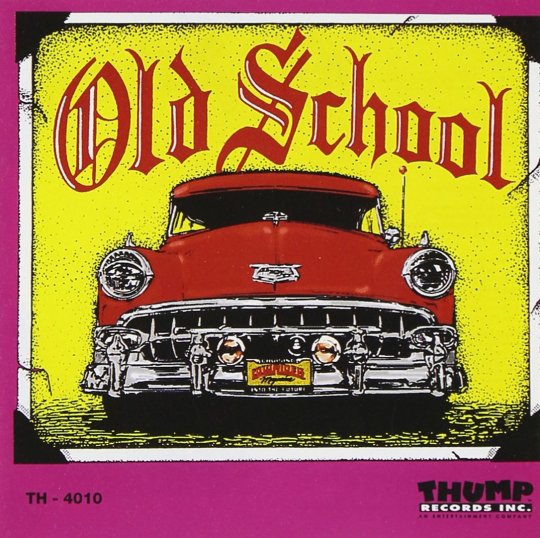

Today's compilation:
Old School
1993
Funk / Hip Hop / Electro
I think what's most striking about this very dope collection of mostly 80s party jams is that, when this album was originally released in 1993, people were *already* referring to this music as being representative of the "old school." I mean, the latest song on this thing is Rob Base & DJ E-Z Rock's 1988 classic, "It Takes Two," and while that's universally regarded as a hands-down old school party-rap standard today, it's wild to think that people were willing to call it "old school" *just five years after* it first came out. Like, imagine considering literally any song from 2018 old school right now?! Crazy, right?
But this fantastic release seems to have already known the deal: three years after the 80s had ended, and still to this day, we were going to refer to a lot of that decade's output as definitively old school. And the brass at Thump Records were clearly proven right by this notion, because, even in these current 2020s, we still refer to this album's overall sound—that electro-synthy-fat keyboard bassline-post-disco-boogie-funk stuff—as 100% old school; not much of the material that preceded it, and no agreed-upon opinion about anything that came after it, either; but one thing that we all seem to know for certain is that the 80s were definitely a part of the old school era.
So, if you're looking for some of those vintage clap-and-stomp old school block party grooves, then this CD is simply essential listening. We've got total classic good-time party-rockers all throughout this thing, like Parliament's "Flashlight," George Clinton's "Atomic Dog," and the Rick James-produced "All Night Long," by the Mary Jane Girls. Also another big hit that topped Billboard's Hot Soul Singles chart in 1981 with Frankie Smith's "Double Dutch Bus," which famously featured a bunch of Ebonic lyrics that would later go on to be sampled by Missy Elliott in her own 2002 rap smash, "Gossip Folks":
youtube
Teena Marie comes through with her #3 R&B hit, "Square Biz" as well, and pioneering Brooklyn rap crew, Whodini, deliver two cuts off of their 1984 platinum-selling LP, Escape, with one of their biggest singles, "Friends"—whose spine-tingling electro keys would find their way into Nas' "If I Ruled the World," and whose chorus would also get interpolated by Everlast during his rootsy folk-blues phase on "Ends"—and its B-side, "Five Minutes of Funk."
And, really, I could've picked pretty much any other random handful of songs from this album and written as glowingly about them as I did the ones above, but I don't wanna overload this post. So just know that just because I didn't end up devoting a few words to most of these songs, that doesn't mean that they don't deserve an equal amount of praise, because they definitely do.
A terrific CD, from top to bottom, that makes for an awesome way to channel 70 minutes of some of those beloved and bygone 80s old school party vibes.
And if you want *3 and a half more hours* of 80s goodness like this, I also have my very own Spotify playlist that's of a slightly different stripe, which includes more dance-pop and freestyle on it, along with classic electro, hip hop, and a little bit of new wave too 😊.
Highlights:
Frankie Smith - "Double Dutch Bus"
D-Train - "You're the One for Me"
Tom Browne - "Funkin for Jamaica"
Parliament - "Flashlight"
Whodini - "Five Minutes of Funk"
George Clinton - "Atomic Dog"
Mary Jane Girls - "All Night Long"
One Way - "Cutie Pie"
Rob Base & DJ E-Z Rock - "It Takes Two"
Teena Marie - "Square Biz"
Whodini - "Friends"
The Gap Band - "You Dropped a Bomb on Me"
Spyder-D - "Smerphies Dance"
#funk#hip hop#rap#old school hip hop#old school rap#electro#dance#dance music#electronic#electronic music#music#70s#70s music#70's#70's music#80s#80s music#80's#80's music
8 notes
·
View notes
Text
THE LIGHT SIDE OF THE MOON: SCARLETT TAYLOR'S VEIL

All Photo Credits to Helen Elizondo. Essay by Tejas Desai.
The New Wei is proud to introduce a feature series on bold, dynamic artists who push the boundaries of what's possible and deliver a unique life vision.
Our first ever feature is musician Scarlett Taylor. The 23 year old phenom (it's her birthday today, btw!) is a groundbreaking auteur who today 2/1/24 released her second album HALLOWS, a live remastered version of her spectacular debut demo album Veil. She is also playing a show tonight at the renowned NYC music venue Pianos at 7pm:
The following essay examines her music, motivations, and milieu, from her beginnings in quiet but dynamic Lancaster, Pennsylvania to her breakout releases over the past year, when she has come into her own in the greatest city on Earth. You won't find musical biography or criticism this in-depth in any publication outside of possibly Rolling Stone.
So keep it right here on The New Wei, people!

While Olivia Rodrigo croons about relationship revenge and Billie Eilish belts movie soundtracks, another young singer is creating a different path altogether. Her name is Scarlett Taylor, she’s about to turn 23 and she is churning out a more thematically complex oeuvre than her contemporaries.
The 13 songs of her debut demo album Veil are rich in sound and meaning, from the abstract “Love Where the Soul’s At,” dedicated to the decapitated descriptions of Aphrodite in Greek art, to “The Night Beast,” where Taylor evokes “howling at the moon,” to the electronic-heavy “Déjà vu” and the doppelganger-themed “Shadow Talking.” The themes include her own concepts like the veil, silhouette and perfect timing, along with timeless ones like loneliness, fate and loss.
These tracks were released biweekly from her 22nd birthday on February 1, 2023, to the album’s official release date on August 1, 2023. 8 remastered versions will be available on her 23rd birthday, February 1st, 2024, on a live album called HALLOWS.
Before starting this steady output, Ms. Taylor was not performing or creating music regularly—previously she had only released one song called “Clementine,” which she has since disowned and taken off Spotify, claiming it “was not her own” because someone else produced it.
By contrast, Ms. Taylor has controlled every aspect of Veil’s creation and marketing. She makes her own merch, which includes sewing shirts, drawing posters, and creating pins. She performs regularly and creates art daily. This output, apparently, has been personal and artistic therapy for Ms. Taylor, who described the process of creating and releasing as “transformative like the cycles of the moon.” In fact, the biweekly releases are timed to coincide with the full moon and new moon, important symbols for her complex life philosophy.
I first officially met Scarlett Taylor at The Purgatory in Bushwick, Brooklyn, where she was scheduled to open for another up-and-coming singer, Taylor Mecca. Upon arriving, I spotted Ms. Taylor, a tall blonde wearing a trench coat with a guitar strung around her shoulder. I introduced myself. She was so excited I had come to see her play that she gifted me a button-down t-shirt she had sewn from scratch that exemplified the themes of her album: the veil and the silhouette.
On the other side of a flower pattern, the t-shirt stated: “Slipping into the Silhouette of this Veil.” According to Ms. Taylor, the veil represents the parts of us that others cannot see or that we hide, whereas the silhouette symbolizes those that are inevitably public. It seems that in her construction the truth behind the complexity of any human is a balance between those two elements, and perhaps her music tries to capture the space between that divide. Yet the meaning of her work goes well beyond this dichotomy because she describes her songs as “Witch Music,” which is also a title of one of the tracks.
To understand Ms. Taylor’s thinking and aesthetic intent more fully, it might make sense to delve into her background. Her father is Chad Taylor, long-time guitarist of the alternative rock band Live, which released 9 albums over 25 years and experienced some commercial success in the 1990s. Her mother is a yoga teacher. She was born and grew up in Lancaster, Pennsylvania, a distinct mixture of extremely progressive and conservative lifestyles. Ms. Taylor says she was raised in a loving home, where her parents cultivated both her musical and spiritual development. She attended private schools, including Montessori. She has two sisters, both of whom are artists of various types, though neither are musicians.
From the beginning, her parents had an enormous influence on her life path. When her father was home from tours, music would fill the house, and like her mother, she was trained in yoga, becoming a teacher herself. When it was time to consider colleges, she decided to apply to only one school, the Clive Davis School of Music at NYU, which she has attended for the past three years and from which she graduated early in December 2023. If she had not gained acceptance, she says she would have continued to live at her parents’ home in Lancaster, teaching yoga, perhaps working a day job, and creating her music.
In Lancaster, witches, mediums, and doulas filled her social life, and she says that she is fortunate to have been surrounded by so many spiritual women, who taught her to read tarot cards, to release and manifest, to understand the meaning behind the intersection of stars and moons. This is why she celebrates witches, who she says are light workers who inform people how to live a more joyful and loving life through rituals and serving magical elements.
It seems Ms. Taylor’s music is a means of performing this work within herself. Her life has changed immeasurably for the better since she started releasing her music. She is far more spiritually and emotionally positive, and it has unfurled an enormous social life in New York City for her that revolves around music and art.

I categorized my first meeting with Ms. Taylor as “official” because I had encountered her once before. Earlier that summer, I had attended a concert at a converted garage in Bushwick called The Shop. I was there to see another rising star, model-cum-rocker Bec Lauder, who had described it on Instagram as a “secret little show.” I needed to click on a link, enter a password (that I gleaned from another spotlighted band’s post) and pay $8 via Venmo or cash at the door. Being old school and middle-aged, I think I was the only one to pay cash, and Ale, one of the organizers who lived upstairs, needed to go to his apartment to get change for me.
I had come half an hour late, fashionably, but I still needed to wait another hour to see the first band play. During that time, I drank a Bud, included in the price, and met some of The Wedding Planners, the group that organized the event. Jacob Geoffrey and Ale, of the band Ale’s Love Letters, are both musicians themselves, while Maddie, one of several non-musicians, is a philosophy PhD. student, part-time painter, and editor of A Zine.
Several copies of this publication were stacked up in the corner of the garage, and their content, a mixture of poetry, grotesque drawings, and trauma-based prose, seemed to correspond to the shadow work of Ms. Taylor’s musical imaginings. She was there as well—we exchanged a smile—but I never actually met her that night.
The space was filled with art. It was one of a series of monthly concerts that focused on different themes. That evening it was “Magic Night”—participants were urged by email to “dress magically” and there was a magician on-site doing tricks—whereas other themes included “Beach Night,” “Art Night,” and “Alien Night.”
The crowd consisted of young 20 somethings, mostly seniors in college or recent graduates. The initial attendees seemed to know each other, and I was treated with a mixture of fear and wonder.
According to Ms. Taylor, the Wedding Planners formed from a text thread created by Mr. Geoffrey, a recent NYU grad himself. There’s no individual photography allowed at Wedding Planner events (there usually is a designated photographer, however), meaning it’s one of the rare contemporary concerts where a million iPhones aren’t held up to a performer’s face. Ms. Taylor says this radiates a different energy, and it’s meant to form a safe space with no judgment for performers and participants alike.
Concerts are essentially ceremonies, according to Ms. Taylor, and one of the most intriguing aspects of the Wedding Planners concerts is that they perform mock weddings during the night. After their set, the first act throws a bouquet into the crowd. Whoever catches it must propose to someone by the end of the night—it could be a stranger, their friend, a crush, whoever. One of the Wedding Planners officiates, and sometimes this is Ms. Taylor. Otherwise, the night has a few acts, and a DJ takes care of the rest.
Among this friend’s group are an endless number of young musicians, some of whom are Wedding Planners, others not. A vastly truncated list includes Jacob, Ale and Bec, Stevie Bill and Juliet Ivy, Ty Lorenzo, Khaliko and Vanessa Camacho. But for me, Ms. Taylor’s music stands out as worth exploring in depth.
Throughout Veil, there’s a tension between opposing forces—the veil and silhouette, nature and man, love and sex, spirit and body, beast and machine. The narrator struggles within herself to understand the tensions between these elements, and ultimately, concludes that a greater force might be at work in the orientations of her life.
The first quarter of Veil focuses on the individual’s relationship with the cosmos in a mechanized world, beginning with its title track, which will be renamed “Perfect Timing” on the live HALLOWS album. Immediately the singer slips into the silhouette of this veil, and the progression of the song suggests confusion and transformation. In “Internet,” or “The Machine” on HALLOWS, the singer laments a mechanized world where “machines talk to robots” and regrets “growing up online.” “Illusion” finds the narrator defiant that she “won’t quit howling at the moon,” or give up trying to understand the universe despite our man-made reality.
Then we are thrust into a dream and dance sequence of rock rhythms and electronic beats. “New Year’s Day,” a cryptic diatribe, flows into “Déjà vu,” where a dreamy, naive girl meets her lover in the cosmos, and concludes with a desperate wish for reciprocation. “Witch Music,” defining the album’s core vision, serves as its pivot, interrupting its pensiveness with a clubby dance anthem.
The third quarter of Veil explores decadent nights, stormy relationships and insecure feelings. “Tooth Decay” evokes the image of a cigarette on an ashtray and transitions to foreplay and one-night stands. “Love’s Where the Soul’s At” explores the tension between body and spirit, as a woman wonders why she’s loved, and whether her lover is placing her on a pedestal for the wrong reasons. “I don’t want to be like a god to you,” she insists. “I wish my body was gone.” But she keeps repeating to herself, “sex means more” than love, perhaps trying to convince herself that it does.
“The Labyrinth is Bored” uses the metaphor of a bullfight to explore the power dynamics of entanglements and break ups. “Deep grief, time thief. I’m forever mad at the matador. Wrap my skin in red, the victory is yours,” she says, apparently giving into her lover’s worship, whereas in “Night Beast,” the narrator feels guilt “in hindsight” for her previous behavior. “I’ve been the night beast, howling at the moon. A lover to you, destined and doomed.”
The album’s final quarter brings us back to the individual’s battle within herself—the tension between her internal confusion and external savvy. “Slide Down the Wall” evokes the familiar feeling of finally having a relationship you’ve always wanted but now feel you don’t deserve: “You told me you’d be by my side. You are what I’ve been looking for. Loving you feels so easy. Loving you feels like changing seasons. Loving a fool. Loving a fool.” Despite having what she wants, the narrator is still dissatisfied, and wonders if a human relationship is enough to satisfy her need for personal evolution.
The next song, “Where the Shadow’s Play,” references a tempered moon and evokes a lover’s gloom about loneliness and loss. “Meet me where the shadow’s play. My darling’s gone in the afternoon. Sun’s pouring into my moon.” Here the narrator confronts her doppelganger and ponders light and darkness as she considers her true path.
In the final song, “Shadow Talking,” the narrator wakes up on a Monday morning, and considers her relationship-free reality. “My life is scary at night,” she laments. “Lately I’ve been running from my shadows.” Her doctor, in lieu of her lover, doesn’t talk to her and only prescribes her pills. “I’ll wait for the dawn, for that’s the only thing to do,” she concludes. Having struggled with nature and man, love and sex, and now alone to battle within herself yet again, she appears to be at an uneasy truce with the fact that things will unfurl as they will—and perhaps according to a greater ordinance.

The moon themes and investigation of individual identity and mental health, along with the essential conflicts of the time in our “civilized” era, call to mind The Pink Floyd album The Dark Side of the Moon, released exactly 50 years earlier in 1973. Ms. Taylor claims this is mostly coincidental (although, she continuously notes, “there are no coincidences”). However, she has listened to it, as it was grandfather’s favorite album and her singing teacher at NYU, Machan Taylor, is the voice on The Dark Side of the Moon. So, she says there is a lot of “collision” with the album. but she hasn’t spent an exorbitant amount of time with it.
But it’s difficult to completely divorce this album from its predecessor. Like The Dark Side of the Moon, Veil is both a studio album and a concept album. It experiments with sound and is creative in the musical and recording process. In Ms. Taylor’s case, she uses stock logic plugins to alter her voice on certain songs. Just as Pink Floyd’s album was mixed at the famed Abbey Road, the tracks on Veil were mixed in the same studio as where Survivor’s Eye of the Tiger was recorded. The Beastie Boys donated this studio to NYU, and band Phoenix provided its EQ.
Veil is more electronic than rock and it has a decidedly female spin. But like The Dark Side of the Moon, its songs blend into each other in a way that add progressive meaning. While Pink Floyd often wrote their songs as they were touring, in Ms. Taylor’s case, the songs were released as she was creating them.
Yet, she insists, her major influences are more modern, including Maggie Rogers, Grammy-nominated alternative singer who graduated from Clive, got her master’s at Harvard, and shares some of Ms. Taylor’s academic interests; Taylor Swift; Phoebe Bridgers; Bjork; and Mitski. Her father, of course, was a musician with Live, and she was able to go to rock concerts at a very young age, a privilege most aspiring musicians don’t have.
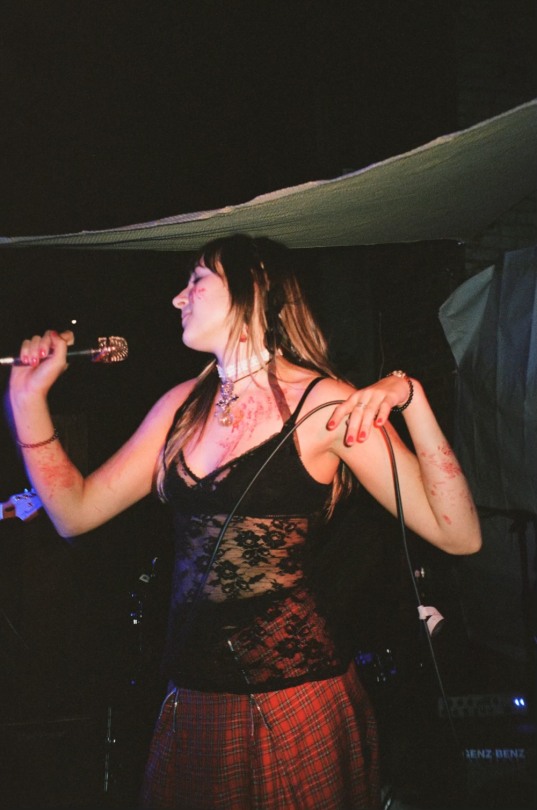
Ms. Taylor’s singing in Veil has a raw and caustic quality, so I was a bit surprised when she informed me that she has been trained professionally from a young age. Her crooning as a toddler led her parents to send her to singing lessons. She quickly graduated to musical theater, then opera, and competed in all-girls choir competitions in middle school.
While in high school, she always assumed she would take a more classical route, since he had always sung Soprano 1 opera music at her local college with their Artist-in-Residence who was a Metropolitan Opera singer. Yet this training, she says, prepared her well for rock music, which tends to be verbose, what she called an “Evanescence vibe.”
Why she now exclusively creates rock and electronic music, rather than continuing with opera, has to do with personal vision and control. With opera, she was a hired hand, but with rock, she can create what she wants. She can write her own lyrics and experiment with sounds. While the live album, HALLOWS, was not recorded by her, she did control all aspects of Veil, making it a true auteur work.
Yet, her auteur vision is matched by a strong fatalistic quality. In Ms. Taylor’s life philosophy, there is a sense that the future has already been written, even understood by those who have studied it for centuries, and she even says that we, as individuals, know more about the future than we let on, because we already plan for it on a daily, weekly, monthly, and even yearly basis.
This duality is present in yet another concept of hers, “Perfect Timing.” In fact, she read an essay about this phenomenon at Lincoln Center a week before our first interview at an event called Truth to Power Café. In the essay she describes her sister’s metaphor of the lemon tree. Because it is a perennial plant, it continues to bloom without water or resources, and it can take between 15-70 years to grow a lemon even after planting the seed. You can either wait for the lemon to bloom with joy or fear, because either way the blooming is predestined, but you do not know it’s timing. Therefore, it’s the attitude of the bearer of fruit that is essential—everything else is prewritten without necessary knowledge.
Ms. Taylor takes this joyful and positive attitude wherever she goes: to her volunteer tutoring, to her classes, to her paid internship at a major record label, where she conducts research and writes reviews on which artists the label should sign, and reads tarot cards to anyone who is interested; and at her part-time job, where she studies the intersection of the stars and moons when not folding jeans.
She intends to stay in New York City, bolstered by her large, and ever growing, circle of friends in the burgeoning indie music scene here. Her goal is to create 2 albums per year for the next five years. When I asked her where she sees herself in that time, she was unequivocal that she would be able to make a living from her songs by then. “I believe it, so it will happen,” she proclaimed, despite the reality that she has only earned a few cents on Spotify for her songs so far.
But she is also practical. At this point, she does not plan to pursue advanced education, so she knows she will need a day job in the interim, and she is trying to gain positions at the record label or in the fashion industry, believing that her NYU degree will give her a leg up in this quest. But her music and art will always come first for Ms. Taylor.
About the Author:
Tejas Desai is an Amazon #1 Bestselling, multiple award-winning author of two dynamic book series: The Brotherhood Chronicle international crime trilogy (The Brotherhood, The Run and Hide, The Dance Towards Death) and The Human Tragedy literary series (Good Americans, the unpublished Bad Americans). He is the founder of The New Wei Literary Arts Movement and runs its associated Salons. He is a graduate of Wesleyan University, attended the University of Oxford, holds two Masters degrees from CUNY-Queens College. While he travels frequently, he works as a Supervising Librarian at one of the busiest public libraries in New York City, where he was born, raised, and of course, still lives.

#contemporary music#indie music#musician#Scarlett Taylor#the new wei#music#electronic music#pink floyd#the dark side of the moon#veil#hallows#witches#tejas desai#auteur#maggie rogers#phoebe bridgers#mitski#Taylor swift#lancaster#bushwick#brooklyn#photography#artists on tumblr#female artists#artists#women artists#authors#shadow work#therapy#light worker
2 notes
·
View notes
Text
Moving on, still dowsing
Here I am on Tumblr, too cheap to keep paying for my old blog on Typepad, now that I've decided that I don't want to monetize the things I enjoy enough to keep a "professional" blog. I still hope to go back to making books again, once I've had a chance to heal up from spinal surgery I had in April, and I'll probably never stop writing, but whether it's poetry or fiction or fanfiction or blogs or essays or political rants, I leave up to chance. I turned 63 in June, and while I hope to keep working for a while yet, because I've got a great job with a lot of flexibility, who knows how long that will last either.
I hope what you'll see here, eventually, is a bit of my creative output: artist's books, poems, links (maybe) to the various kinds of fiction I've been writing, and my thoughts on what the fuck is wrong with people. Oh yes. There will be swearing. Sometimes that's the only way to express what's inside, a good four-letter word. Take yourself elsewhere if that offends you. This is not the blog you're looking for. Move along.
So who am I?
Nobody special. I’ve been any number of things in my life—former wannabe marine biologist, servant of physicists, word wrangler, exploited vagabond scholar, New York City’s secret lover, union activist, accused lesbian, novelist, unapologetic science, tech, and Star Wars geek and Trekker, uncloseted fanfic writer, dilettante book artist, believer in the apocalypse—but through all of that, I’ve been a poet. No matter what else I do or think or believe or what labels I wear, I know that poems are the best single delivery system of emotional bombs, the kind that blow off the masks we all hide behind, if only for a moment, and only to ourselves.
I'm back in Brooklyn, where I started out when I first moved to New York in 1986. Now I'm near the bay, where I can see the ships go by and it's dark enough to see Orion overhead in the winter. I live alone, with my cat. Yeah, go ahead, stereotype that. I'm having a great life. The best part of it is I have ceased to give a fuck what other people who are not my friends and loved ones think of me. I have a fantastic family of choice, some of whom I've known since elementary school, and only a few for less than 10 years. The cat? Miss Bean is a stray some asshole left in her carrier on the street with the door open. She's got serious attitude and a scream like a panther. Some days I can see why they threw her out; but nobody deserves that. And she's learning, after almost five years, to love snuggling. Her cat tree does not have a sign on it that reads "Fort Asshole" for nothing though.
That could be hanging on my front door too, so that's fair enough.
2 notes
·
View notes
Text
I've been doing "morning pages" for a couple months now because every creative in Brooklyn succumbs to the AA-style teachings of *The Artist's Way* eventually, and while my creative output has, yes, improved, the real joy is in keeping an honest to god diary where I can write 3 sulky, self-pitying pages whenever my precious little feelings get hurt
3 notes
·
View notes
Text
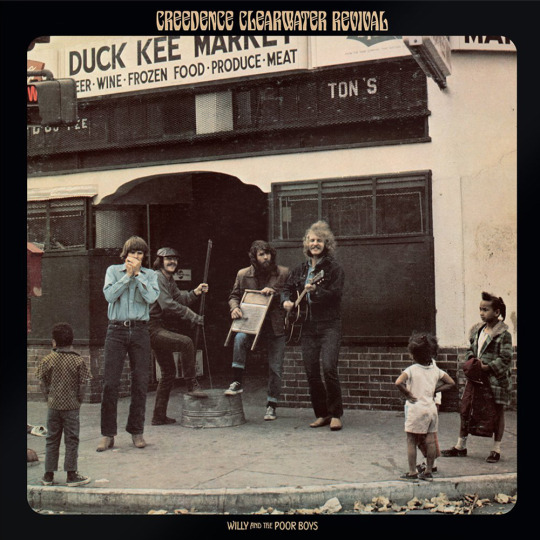
Creedence Clearwater Revival - Willy And The Poor Boys
After three albums of progressively cleaner tighter production the boys of CCR decided to go and do one more sloppy style. While the main hit Fortunate Son still has the crisp production of their recent output the rest is closer to the swampy slop of their debut. There's a solid amount of funk influence in their blues rock and it makes Willy And The Poor Boys stand out among their discography. There's a solid mix of politically charged and party songs that makes it very emblematic of the CCR style.

Beastie Boys - Licensed To Ill
I've said already how I love the Beastie Boys. I think they are one of the best at their type of flow and on their debut they are probably the most focused they ever were. Now I do think that focus comes at the expense of a fun looseness that permeates their next few albums, but it does mean that all the songs are more fully realized. I imagine that if Brass Monkey or Girls had been on Paul's Boutique instead they would have been a minute long each but here they get to be some of the Beastie Boys most well remembered tracks. Also a totally weird thing to be able to say about a hip hop record but the guitar solo in No Sleep Till Brooklyn rips.

Etta James - At Last!
I've known the name Etta James for a long time but I've never knowingly listened to her until now. Her blend of traditional pop, soul, and rock actually caught me off guard. I wasn't expecting that kind of crossover energy from a female pop singer from 1960. The more rock and doo wop stuff was good but the more traditional pop/soul stuff was amazing. The title track and her version of Stormy Weather especially were amazingly delivered. James' voice is husky and rich, with a lot of toughness and it somehow works most beautifully with the more delicate songs. It gives them a sense of wavering confidence.
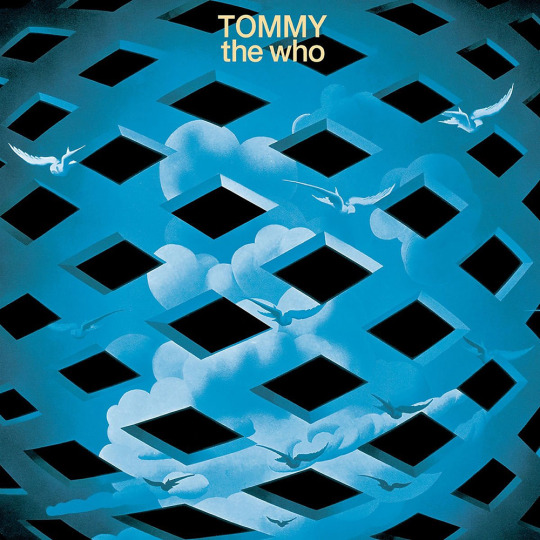
The Who - Tommy
On the face of it Tommy is an album about a boy who is stricken deaf, dumb, and blind by childhood trauma, experiences every kind of child abuse imaginable, and finally is cured of his condition only to immediately become an abusive cult leader himself and finally lose all of his followers when they realize he's a fraud. It's a lot and it's densely packed even as a lengthy double album. I find it to be very thematically interesting and, though I won't analyse it here, ideas about the cycle of abuse, a representation or Plato's allegory of the cave, and a condemnation of spiritual guidance in general are just a few of the things that I personally read into the lyrics on Tommy. It's a shockingly intelligent album from the band who once made a fake ad for baked beans. Musically this is also the most complex and mature thing The Who would ever write. Already a talented batch of musicians they show off harder than ever with Pete Townsend proving that he could arrange as well as any classical composer, John Entwistle pulling out the French horn on more than a few tracks, Keith Moon just completely obliteration the drum kit at every chance, and Roger Daltry successfully vocalizing the emotional depth of the story's various characters. As an attempt at real operatic formula it features an overture repeating motifs, and even a few interludes that could be called the rock version of recitative. It's bigger and more dramatic than any Who album before or after. It more than lives up to it's reputation and could stand to be more seriously analysed from a literary standpoint in my opinion.

Sleater-Kinney - Dig Me Out
Coming out towards the end of the riot grrrl scene of the 90s Sleater-Kinney's third album manages to be a little cleaner and more nuanced than their contemporaries but no less angry. They deliver a hard hitting punk adjacent brand of alternative rock that is aware of grunge but is very much doing its own thing. The feminist themes common to the riot grrrl movement are on full display and nuance is out the window. There's no time for nuance when you are raging against the patriarchy and as a bonus Sleater-Kinney are not one of the terfy riot grrrl bands.
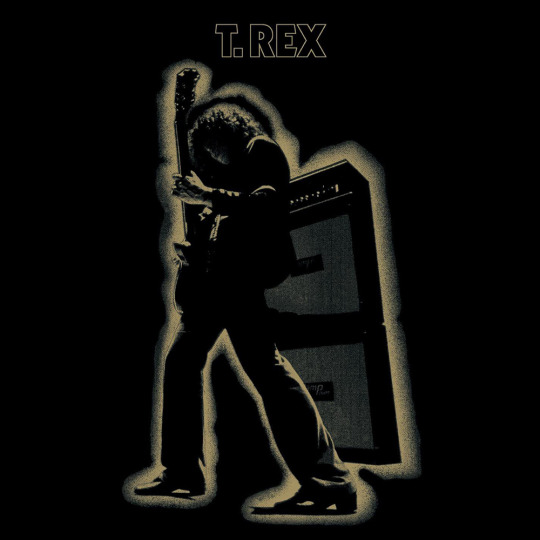
T. Rex - Electric Warrior
Electric Warrior is probably the most important release for the glam rock genre. There's this hint of folksiness mixed with a glitzy sheen and those two things are somehow not at odds with each other. The lyrics? Damn this shit is horny. Marc Bolan was exquisite at expressing sleaze without making me feel uncomfortable. There's this combination of cheek and haunting atmosphere that leaves me with the impression that Bolan is singing about fucking to keep something scarier at bay.
#500 album gauntlet#creedence clearwater revival#beastie boys#etta james#the who#sleater-kinney#t. rex
6 notes
·
View notes
Text
LOLBiT NAMES n PRONOUNS
( continue under cut )


NAMES
Albert, Blink, Bit, Brooklyn, Calamity, Catastrophe, Cattie, Chaos, Clearance, Clementine, Clover, Demo, Derek, Devendra, End, Faust, Final, Gwen(dolyn), Havoc, Hello, Iris, L, Lexie, Lumos, Matthew, Matter, Mauve, Mayhem, Michayla, Mike, Nathan(iel), Nox, Pat, Percy, Phantom, Quinn, Rys, Ryker, Sasha, Screen, Sharp, Tangy, Thorn, TV, Val, Vendetta, Venn, Vicki, Vinyl, Violet, Yes

NEOS
000/000s/000self
Bark/Barks/Barkself
Byte/Bytes/Byteself
Canine/Canines/Canineself
Carn/Ival/Ival’s/Carnivalself
Car/Carn/Carni/Carnivalself
Cir/Circus/Circus’/Circuself
Claw/Claws/Clawself
Clow/Clown/Clowns/Clownself
Co/Code/Codes/Codeself
Col/Color/Colors/Colorself
Color/Ful/Colorful/Colorfulself
Compute/Computer/Computerself
Cy/Cyber/Cybers/Cyberself
Data/Datas/Dataself
ERR/ERROR/ERRORS/ERRORSELF
exe/exe/exe/exes/txtself
Fool/Fools/Foolself
Fox/Foxs/Foxself
Fun/Funs/Funself (Although I’ve heard they are nonbinary only, use at risk?)
Fur/Furs/Furself
Hard/Ware/Hardwares/Hardwareself
Honk/Honks/Honkself
Input/Inputs/Inputself
Je/Jest/Jester/Jesters/Jesterself
Joke/Jokes/Jokeself
Jug/Juggle/Juggles/Juggleself
(or literally go by lol/bit/lolbit/lolbits/lolbitself)
RAM/RAMs/RAMself
Pix/Pixel/Pixels/Pixelself
Output/Outputs/Outputself
Silly/Sillies/Sillyself
Silly/Sillys/Sillyself
Soft/Ware/Softwares/Softwareself
Tri/Trick/Tricks/Trickself
Ty/Type/Types/Typeself
Val/Value/Vals/Valueself
Vir/Virtu/Virtuals/Virtualself
Yelp/Yelps/Yelpself
Yip/Yips/Yipself
#🐏 MOD HANiBAL#★NAMES#★NEOPRONOUNS#CONNECTED..! ⠀| ⠀finished ⠀request#DEDiCATiON⠀ | ⠀ for⠀you!!#fnaf kin#lolbit kin#lolbit#five nights at freddys kin#)) ough sorry if theres too many fem/masc tried my best
13 notes
·
View notes
Note
PLEASE tell me more about the indie sleaze era i beseech you
I’ve put off answering this cuz it’s a really hard time period to distill down to a tumblr answer, but I’ll tell you a few nuggets that hopefully will paint a clearer picture for you.
1. The entire point was looking and acting like you didn’t care, which was easiest to do if you were rich. If you look at photos of participants, you might say oh god, the style was AWFUL. Who wears caked on glitter eye shadow with sweaty bangs and glasses with no lenses and a stained polyester neon green American apparel dress? It was intentionally awful, and intentionally cheap and sweaty looking. The idea was you were hot not cuz you were conventionally pretty, but cuz you were fun! And fun people were relaxed people who didn’t give a shit about looking put together. Fun people are also people who party a lot, and if you wear shitty clothes that look thrown together, with a drop of irony cuz you again, don’t give a shit, and are always sweaty with lazily applied makeup, you look like you’re a good time. So most visible figures of the indie sleaze scene were two kinds of people who could achieve this: rich people who could afford to look sweaty and rumpled and trashy and party all the time (Alexa Chung, Chloe Sevigny, Olsen twins, lots of It Girl models), and young musicians who were happy being broke at a basement party in Brooklyn, cuz they genuinely didn’t give a shit and genuinely liked to party. It also coincided with the 2008 recession so affordability for almost everything went out the window.
2. The music at the time can be characterized similarly. It was messy and clanging and sloppy and unpolished. Due to everyone being broke, a lot of musicians leaned heavily on Synthesizers because of how cheap they were compared to how infinite their sound output could be. So you’ll find a lot of electro-punk sounding stuff, which to a young person now wouldn’t sound that groundbreaking but it was back then. The more rough and ready it was, like you made it yourself in your apartment, the more indie sleaze it was. And this sounds counterintuitive, but it was meant to also sound unpleasant. Singing slightly off beat or pace with the melody, or over processing your voice so it sounds almost like you blew the mic, distorting your voice, bad harmonies or just bad singing lol, sounds that were jarring like cow bells and harsh snares and other odd instruments that make for a syncopated sound. Like the aesthetic, intentionally “bad” to push the boundaries of what is actually important when it comes to making music and to push back against the glossy elitist pop of the 2000s. (also funny to see all the glitch haters pop up recently cuz if you can’t handle anything that isn’t glossy clean pop, you’d have HATED indie sleaze lmaoooooooo)
3. I think in general it also helps to contextualize it with the platforms it was “performed” on, if you will. Facebook was the primary place, albums in particular. Not sure of your age, anon, but in the late 2000s/early2010s, people would run around with digital cameras like a Nikon Coolpix, dump the memory card onto their computer, via iPhoto usually, and upload an album of those photos. Typically a party, a weekend, a trip, what have you. (It’s funny cuz people are doing that now with the “photo dump” on IG but time is a flat circle and humanity always gravitate towards the same habits if allowed lmao) This timeline of performance is important because it’s what made indie sleaze, and all pre-social media movements, so ephemeral and very much “you had to be there.” At the indie sleaze party or concert, in whatever basement or Brooklyn warehouse or whatever you were in, you took photos yes. But due to the memory card upload process, those photos could only be seen days later. So if you weren’t hanging out with the right people, in the right places, you couldn’t access the movement because by the time you knew about the events, they were over. That ephemeral nature also made it exclusive. Truly, in a literal sense, if you knew you knew, and if you didn’t, you didn’t.
4. The term indie sleaze actually didn’t exist until like last year. At the time, there was little delineation between “indie sleeze” and “twee” and whatever else. It was all just called “hipster” style. Only recently, as always is the case with documenting recent histories, have we had enough distance to pull from references and create a name for it. And start to separate the twee from the punk from the indie sleaze. i can do it now but I couldn’t do it back then.
For a visual, the indie sleaze Instagram is a good recourse, as well as indie sleaze playlists on Spotify. Some of them are, like, wrong lol, but if you see a lot of sleigh bells, yeah yeah yeahs, LCD soundsystem, metric, Beth ditto, the kills, bloc party, MIA, Los campesinos, MGMT, Santigold, Grizzly Bear, early grimes, crystal castles, ratatat, justice, and Girltalk (I’m sorry in advance) then you’re in the right place.
#I’m very bored but kind of have a cold so I can’t do much#so I wrote all this with a slight fever sorry if it doesn’t make a ton of sense#normally I’d say google cuz there are lots of articles now that have links to things#but I’m bored and that means I’ll answer most anything haha
10 notes
·
View notes
Text

Sacred Bones 15th Anniversary @ The Knockdown Center; May 28, 2022.
Uniform has had an effect on me that’s made all difference. Their live performance as then-unknowns at Output led me to the Sacred Bones label. Lead singer Michael Berdan repped Shame which had me finally visit Rough Trade NYC before their re-location and got me hooked on Totalitar. Not only that, I also sought out each and every band member’s projects (York Factory Complaint, Coca Leaf, Impalers, Liturgy, Anatomy) and discovered other labels in Dais and Wharf Cat. It took me six years before finally seeing the band in full and even bought merch- from Berdan himself. Did I mention they’ve become one of the hardest, most destructive, and pulverizing industrial-metal bands as of recent? All the reasons why they became one of my top ten all-time favorite artists ever.
Meanwhile, New York City label Sacred Bones housed some great artists such as Zola Jesus, Lust For Youth, Blanck Mass, The Holydrug Couple, Spellling, and Marrisa Nadler. They’ve praised the likes of John Carpenter, Mort Garson, and Suicide’s Alan Vega, plus had Boris and Black Marble come aboard. They’re based in the Greenpoint neighborhood of Brooklyn. With what they’ve done and where they’re situated, how would I not support them?
They celebrated their 10th anniversary in 2017 with two separate shows. I bought tickets to both April and May dates, but I had doubts going as I was in the midst of recovering from life-saving shoulder surgery. Re-injuring it would not be a good look for my trust and my surgeon’s reputation so I ended up eating the cost. Another New York City-based label, Hospital Productions, celebrated their 20th anniversary which I attended, but I held out hope that Sacred Bones would return for their 15th. In short notice, they would. Five years later, I have a chance of finally attending my all-time favorite label’s showcase while keeping my New York City / Brooklyn quotient up. You wouldn’t even understand how fast my heart was beating as I got closer to the event. That’s the case with every trip to New York City because it’s always a big deal to me.
Long Island had a succession of greyscale cloudy days and rain. Saturday would be no different, I feared. Coincidentally, the clouds broke up while I rode the Central Islip line to Woodside. By the time I took the 7 line to catch the Q39 bus, it was a baking, bright and hazy 75*F by the time I got to the Knockdown Center. Security and detail dressed in full black asked everyone if they were here for Sacred Bones or Zero (an alternate techno dance event). After weaving through the guard rail labyrinth, showing ID, and having our tickets scanned, we were welcomed in. I took for granted just attending and supporting the label’s showcase because I knew it was an event. By the end of the night, this experience would be nothing I expected.
I entered the Knockdown Center’s huge lobby and through its conduits, observing several people sitting outside and enjoying the now shining skies like it was a university campus. I arrive at the huge main stage area and it was a dazzler. Once a thriving glass and door factory, this centurian structure is now out-of-commission for its original purposes and became a live venue and art space. It’s been internally repurposed and most of its original structures and aesthetic had faithfully remained intact. The bill would have seven artists across two areas and it would all start in the Texas room.
I walk in and the festivities had already started. Thirty people were here before me; some standing against the wall, some even sitting on the four-foot tall upper level. Everyone was totally silent and attentive as Constant Smiles’ sound welcomed everyone in with arms wide open. I look around and I see punks, metalheads, artist-types, longhairs, goth girls, girls in pigtails, an older silver gentleman wearing all-black matching sportscoat and miniskirt, and many more broad-minded walks of life coming in from Queens, Brooklyn, and Manhattan. Ben Jones’ and personnel’s peaceful delivery of gentle long-distance drone, dreampop, and shoegaze painted this picture of total tranquility and serenity. Their sound perfectly juxtaposed with the setting sun’s rays beaming through the windows and into the Texas room. Nobody couldn’t have symbolically started the entire production any better.
All of us migrated to see The Men, the second artist up and the first to take the main stage. If Constant Smiles were the warm-up, then The Men got everything going with a such a slamming free-wheeling set. The line-up of Kevin Faulkner, Mark Perro, Nick Chiericozzi, and Rich Samis delivered a near-endless performance that sounded like it took forever and that’s not a bad thing. I stood about twenty feet away from the main stage and I zoned out letting the music take me to places. At this point, the people were sparse with lots of space to move around on the main floor but they were into it. One song of theirs I instantly recognized from their old line-up was “( )” because I did feature it on Omega WUSB.That was their most powerful one of the night. After their performance, things would take a turn to the unexpected.
Some of us decided to march on to the Ready Room, Knockdown’s former main office-turned bar where they held conferences, panels, and small celebratory events. I had no idea who LD Deutsch was. When I walked in the almost pitch-black space, I seen plenty of people packed in and seated with a projector set-up in front. It looked so surreal. A lecture during a concert night? Where am I? I don’t believe this. This was the stuff my dreams were usually made of: odd situations, things, and re-arrangements that could possibly happen in real-life but never did. Now this was it. Am I now in my own dream? For a good firty-five minutes LD Deutsch presented to us “A Revised Lecture On Time: Reality at the Edge of Itself”. It was a compliment of her latest material “Mythologies Of Time And Timelessness” and her second one published through Sacred Bones’ press. As part of their 15th anniversary, the label chose a great opportunity to showcase their best example of featured authors and filmmakers.
Meanwhile, the next act already got going on the main stage. In the past five years, Sacred Bones really ramped up their signings. I’m more accustomed to their first ten years when almost every artist signed on the label played for their 10th. Anika released Change on the label in 2021 and…I didn’t know what to think when I first witnessed them. Here was Annika Henderson up front on vocals, sounding reserved, quite soft spoken, calm and in control. Her touring personnel behind her put together an amalgam of minimal post-punk, art-rock, and krautrock and it felt up there. Once they played “Sand Witches”, I started finding plenty of elements of their sound that had that specific something and that continued with “Change”. Both had that just-about-right hypnotic spell that drew me in and enough to at least give them another chance in the very near future.
Squrl was another unfamiliar unknown to me and recent signing on that night’s line-up. Anika’s set spilled a little over its end time so I ended up being a little late for the Texas room to see them. It was another attentive, quiet trip on the bill that painted a lively adventurous picture through long expansive guitar drones and a relaxing sound that went the distance. After one of their songs, a fan was dared by her friends to scream out “Jim Jarmusch!” and she did. What a surprise - that is him! Ghost Dog. Coffee And Cigarettes. Fifteen feet away was the closest I ever came in presence of a film director. Anyway - everyone knew it was him with the three of them creating another calm, pleasurable experience. P.S.: no one thought you were funny, you donkey.
I wasn’t too familiar with Spellling’s music but I was still auditioning it for a future use. I was also on the fence about her because she’s not my usual fare. I got to know her better as she performed on the main stage and she won it. Spellling had so much fun onstage and felt super gracious performing for Knockdown’s main crowd who saw her as an amazing performer and being. She was alive. Her presence was animated, playful, free-spirited, and boundless for her type of musical work that was imaginative, magical, and full of fantasy - the total opposite of where I was heading to next.
I wanted to return to the Texas room one final time as early as possible because I did not want to miss the next act, and promised myself to be in the thick of it when it happened. Brooklyn’s scream-core icon Jenna Rose (Anatomy) and Sacred Bones king-of-all-trades Ben Greenberg took to their instruments when were done chilling with their friends. Then their touring drummer (who to this day I still don’t know who he is) came aboard and finally lead singer Michael Berdan showed up wearing Salo / 120 Days Of Sodom to win the T-Shirt Of The Year award. Uniform finally got going and we all were ready for them. Berdan gave thanks and hat-tipped Bones label founder Caleb Braaten for signing them before delivering a few laugh-out-loud wisecracks. Like the last time I saw them at Saint Vitus last year, they kicked off the set with “Life In Regression” and brought the out-of-mind insanity and violence. During the second song, I got splashed hard with a cup of beer. Now it’s going down. About seven or eight guys (including myself) wailed and pushed each other like you would with any nihilist affair. People got knocked down and were promptly pulled up to keep going. Someone lost their glasses and frantically searched for them during the thick of the action. He found them all right: near my boots. That summed up my third time seeing Uniform. If not for them, I wouldn’t have been here. Simple as that.
The label listed six artists and one author appearing “plus more to be announced”. At the last minute, they added Black Marble to end the night. I can thank Chris Stewart’s unforgettable sounds for getting me by during an insurmountably difficult and surreal time. I already seen him open up for Cold Cave at Greenpoint’s Warsaw four years ago, so seeing him again was a nice bonus. Stewart returned to his hometown and his no-wave dressed suspects also took the stage. As a 2020 signee (and I was floored when that was announced), they leaned towards their newer stuff with that familiar cute synthpop and special lo-fi tonality. To me, Black Marble isn’t just a great artist but also a mood; a unique feeling I wouldn’t get from any other outfit. The idea that Stewart originated from New York City, the aesthetic of A Different Arrangement,how “A Great Design” resonates with me, and a sound that leads my heart to where it truly should be (Brooklyn, not Long Island) still makes Black Marble one of personal sentiment. Everyone got into them. The petites, too, as they danced and rocked out to “One Eye Open”. I always wondered what type of significant other would be into them as I never met anyone who were. Now I have my answer.
For five hours, I felt like everything lined up: the label, their fans, the setting, location, and how everything played out. The Sacred Bones fans repp-ing Spacemen 3, Sannhet, Health, and Converge who surrounded me were exactly the type I’d be associated with. Only in the city, because Long Island has nothing going for it. As I observed and took in everything, I couldn’t help having that feeling of someone, anyone such as a Brooklyn contact or a city-minded interest I met during the pandemic summer to come join me because it would’ve turned an already 9.5 to a perfect 10. I held it in knowing that having those contacts would’ve certainly made all the difference. Imagine if I were to meet someone new from the event? But that didn’t happen. My anxiety, fright, and uncertainty held me back.
But that didn’t even leave a permanent scratch. No. What did was the subway lines and bis rides on the way to Queens, the semi-sweet smell of old decaying wood, the high-definition visuals of heavy fog and sweet colored lighting, and another improbable-turned-unforgettable night written in the books. Spring couldn’t have ended on such a high note.
Once again, I faced the dilemma of getting to the subway in time, getting home early enough and not come to work sleepy the next day. I exited the Knockout and walked past all the groups of people converging on how great the event was or some other insignificant bullshit. I had an Uber pick me up and take me to the Woodmere stop heading east where I’d transfer at Jamaica and back home to Central Islip. As with all rail rides to and from the city, there’s always a pair of headphones plugged in my ears and the music playing from my iPhone. There’s always a playlist made to forever remember the day by.
#Sacred Bones#Constant Smiles#The Men#Anika#Spellling#Uniform#Jim Jarmusch#Black Marble#Queens#NYc#New York City#omega#music#playlists#mixtapes#personal
3 notes
·
View notes
Text
Throwback: Happy 83rd Birthday, Giorgio Moroder!
Throwback: Happy 83rd Birthday, Giorgio Moroder! @giorgiomoroder @OAODonnaSummer @daftpunk @RedBullMusic
8
Back in 2013, Red Bull Music Academy invited the legendary electronic music artist ad producer Giorgio Moroder to speak in front of a small group of music students about music, his creative process and more — and to what was then-billed as his first ever live DJ set at the now-defunct Williamsburg, Brooklyn nightclub Output.
Along with his long-time collaborator and musical director Chris…

View On WordPress
#1950s#1960s#1970s#1980s#1990s#2010s#2020s#Daft Punk#Daft Punk Giorgio by Moroder#Daft Punk Random Access Memories#disco#Donna Summer#Donna Summer Hot Stuff#Donna Summer I Feel Love#Donna Summer Love to Love You Baby#Giorgio Moroder#OUTPUT#Red Bull Music Academy#throwback
2 notes
·
View notes